
















































PUBLISHER
Tushar Sahoo tushar@gecmediagroup.com
CO-FOUNDER & CEO
Ronak Samantaray ronak@gecmediagroup.com
MANAGING EDITOR
Jeevan Thankappan jeevan@gecmediagroup.com
GLOBAL HEAD, CONTENT & STRATEGIC ALLIANCES
Anushree Dixit anushree@gecmediagroup.com
ASSISTANT EDITORS
Sehrish Tariq sehrish@gcemediagroup.com
GROUP SALES HEAD
Richa S richa@gecmediagroup.com
PROJECT LEAD
Jennefer Lorraine Mendoza jennefer@gecmediagroup.com
SALES AND ADVERTISING
Ronak Samantaray ronak@gecmediagroup.com Ph: + 971 555 120 490
IT MANAGER
Vijay Bakshi
DESIGN TEAM
CREATIVE LEAD
Ajay Arya
SENIOR DESIGNER
Shadab Ali Khan
GRAPHIC DESIGNERS
Jitesh Kumar
Sejal Shukla
PRODUCTION, CIRCULATION, SUBSCRIPTIONS info@gecmediagroup.com
UAE Office No #115, 1st Floor, G2 Building, Dubai Production City,Dubai, United Arab Emirates Phone : +971 4 564 8684
USA
31 Foxtail Lan, Monmouth Junction, NJ 08852, Ph: + 1 732 794 5918
PRINTED BY
Al Ghurair Printing & Publishing LLC. Masafi Compound, Satwa, PO Box: 5613, Dubai, UAE
PUBLISHED BY
Accent Infomedia MEA FZ-LLC Office No #115, 1st Floor, G2 Building, Dubai Production City, Dubai, United Arab Emirates Phone : +971 4 564 8684
A PUBLICATION LICENSED BY INTERNATIONAL MEDIA PRODUCTION ZONE, DUBAI, UAE @Copyright 2018 Accent Infomedia. All rights reserved.
While the publishers have made every effort to ensure the accuracy of all information in this magazine, they will not be held responsible for any errors therein.
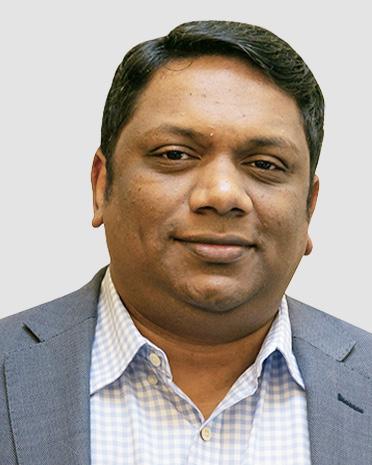
Having visited ADIPEC this month, I was struck by how tech-driven sustainability has become a major trend in the region’s energy industry. Digital transformation and the transition to a low-carbon economy dominated the event, aligning with the goals of COP28, which Dubai hosted last year. Low-carbon technologies on display included innovations such as wind and solar energy, biomass systems, and carbon capture equipment. Even traditional energy players are building low-carbon molecules businesses, driven in part by customer demand and regulatory pressures.
Among low-carbon technologies, hydrogen shows the most promise, emerging as a stable and sustainable source of clean energy. Demand for both blue and green hydrogen is expected to surge in the coming years, potentially doubling to 223 million tons by 2050, according to Wood Mackenzie. Currently, the biggest challenges with hydrogen are producing it at scale, as well as its storage and transportation. The cost of hydrogen production is estimated to be between $2 and $7 per kg, with Saudi Arabia aiming to reduce this to $1 per kg in the long term. Saudi Arabia has recently started construction on a green hydrogen project at NEOM, with production slated to begin in 2026 and an initial daily capacity of 650 tons of hydrogen. Similarly, Oman has completed the tender process for two hydrogen plants, aiming to produce at least 1 million tons of renewable hydrogen annually by 2030, and up to 8.5 million tons by 2050—exceeding the current total hydrogen demand in Europe.
Another tool gaining traction in the transition to clean energy is carbon capture, use, and storage (CCUS), which involves capturing CO2 from industrial facilities for use in various applications. Globally, there are 41 CCUS projects in operation and 351 in development. In the MENA region, one of the challenges with CCUS is limited access to infrastructure, underscoring the need for greater coordination between emitters and governments to share the costs of CCS networks.
Enjoy reading.
Jeevan Thankappan jeevan@gecmediagroup.com

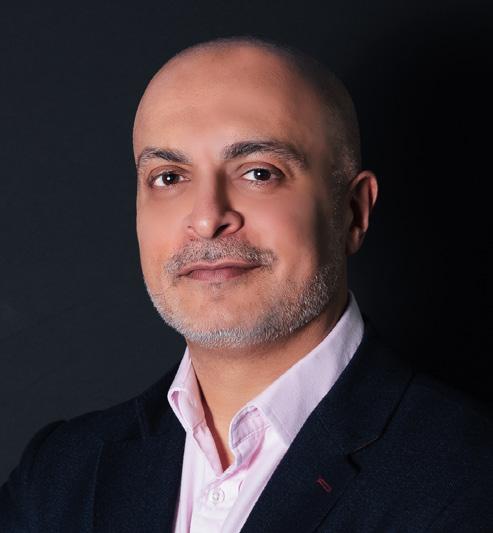

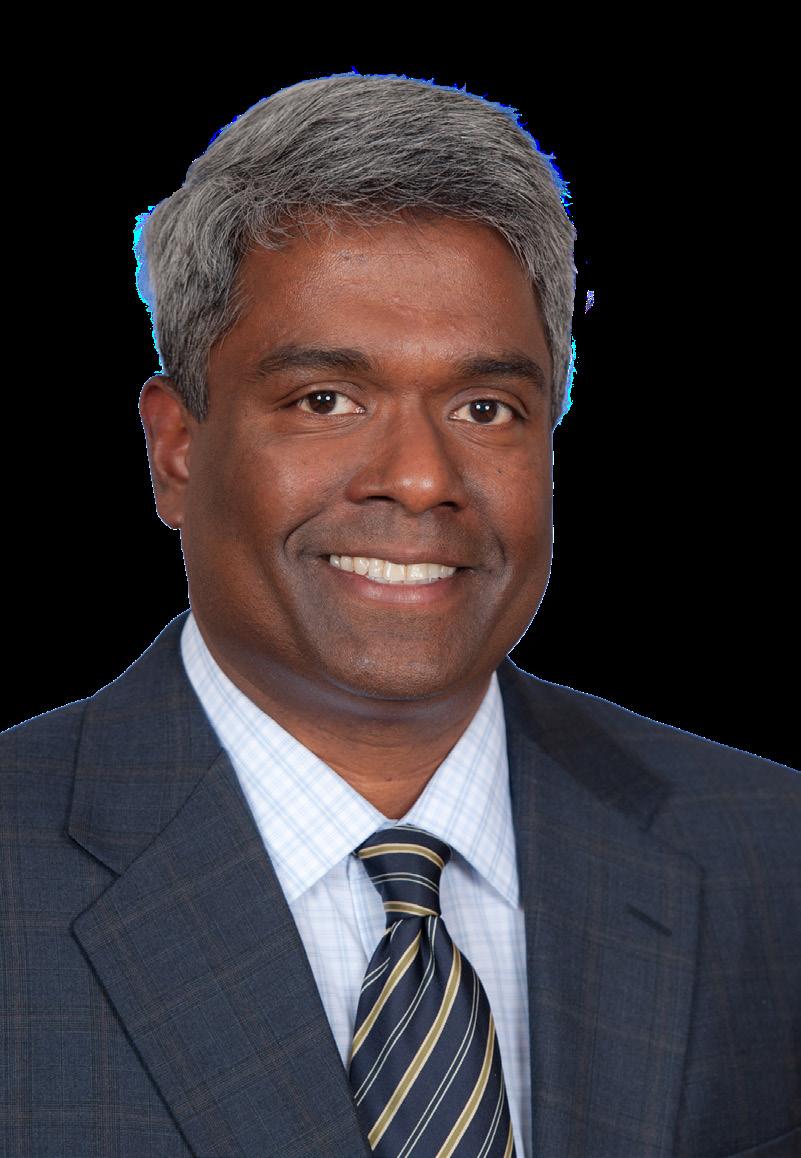

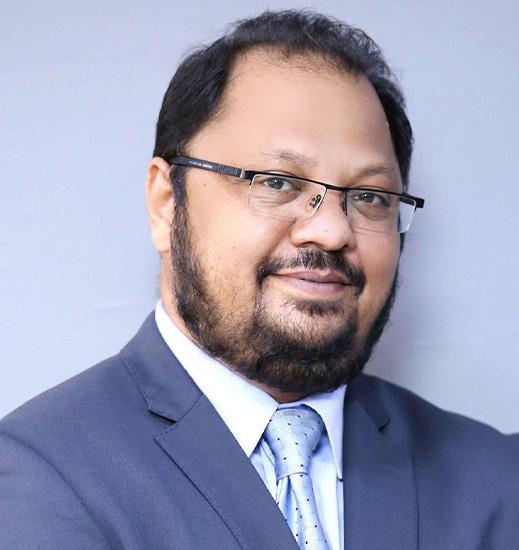
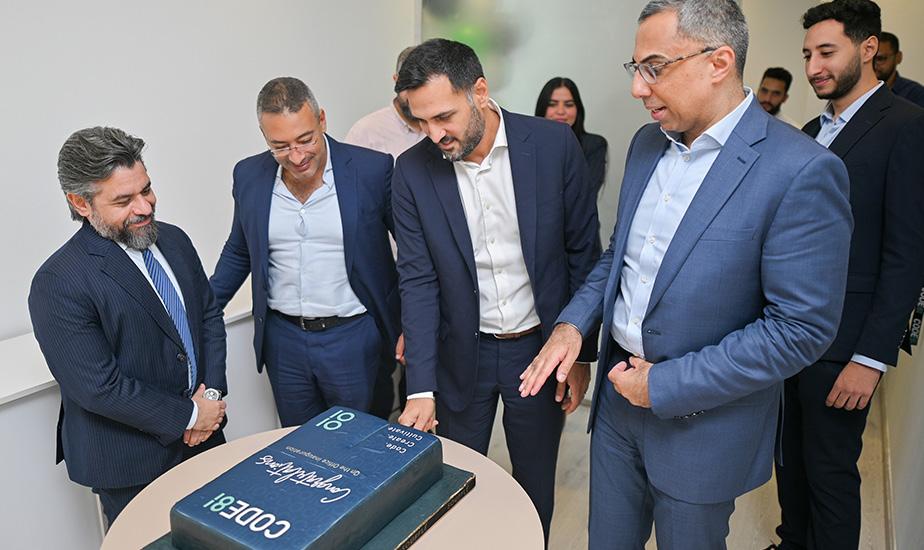
CODE81 continues its regional expansion with the inauguration of a new office in the Sheraton Al Matar Heliopolis area of Cairo, Egypt. This strategic step further strengthens the company’s capabilities in meeting the growing demand for digital transformation solutions across the UAE and the wider Middle East.
The new Egypt office will serve as a key hub for backend support, enabling CODE81 to deliver tailored, cutting-edge solutions
with greater agility and precision. According to recent forecasts, the Middle East’s digital economy is set to grow by 20% annually, reaching $780 billion by 2030. This expansion positions CODE81 at the forefront of the region’s evolving digital landscape.
Egypt offers a unique blend of strategic advantages, making it an ideal location for CODE81’s expansion. Geographically, Egypt serves as a crucial gateway between Africa, the Middle East, and Europe, enabling efficient access to key regional markets. Its infrastructure is rapidly evolving, with the imminent launch of 5G in late 2024 and significant investments in digital infrastructure. These developments provide a solid foundation for the digital
economy to flourish. The Egyptian government’s ICT 2030 strategy further underpins this growth by promoting digital transformation across various sectors, particularly focusing on innovations such as electronic payment systems and financial inclusion.
Egypt’s thriving ICT sector is another key reason behind CODE81’s decision to establish its new office in Cairo. With one of the fastest-growing ICT markets in the region, Egypt offers a competitive and highly skilled talent pool, particularly in areas such as finance, education, and healthcare. This rich talent base, combined with cost-effective operational expenses, makes Egypt an attractive hub for backend digital services.
du announced a major milestone in improving public safety and fire prevention in the UAE. In collaboration with Hassantuk an offering by Core42, a G42 company specializing in sovereign cloud, AI infrastructure, and digital services. du aims to significantly upgrade the fire safety infrastructure across the nation by integrating 21 cuttingedge technology features into the Hassantuk system. The initiative was unveiled at GITEX 2024, where du is exhibiting under the theme “Global collaboration to forge the future AI economy.”
The enhancement of the Hassantuk system focuses on integrating 13 hardware features, including interactive touchscreens, sensors, AI-powered cameras, and more, alongside eight sophisticated application functionalities aimed at bolstering the country’s fire
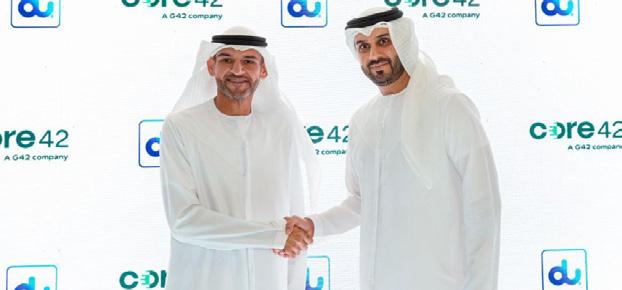
safety measures. This innovative integration underscores the UAE’s commitment to adopting smart city technologies, with an emphasis on public safety advancements.
Jasim Al Awadi, Chief ICT Office at du said: “We are at the brink of a technological revolution in the way fire safety measures are implemented in the UAE. Our collaboration with Hassantuk represents a pivotal step forward in our journey to create a safer, smarter society. In partnership with
Hassantuk, we will leverage the power of IoT and AI technologies to set a new standard in emergency response protocols and public safety infrastructures.”
Yousef Al Harmoodi, Chief Business Development Officer, Core42 and General Manager, Hassantuk, said, “The integration of du’s advanced technology into Hassantuk’s framework marks a significant step in strengthening public safety across the UAE. Core42’s expertise in AI infrastructure and IoT, will enable du to deliver advanced fire safety solutions that will set new standards in emergency response protocols. This collaboration reflects our commitment to driving the UAE’s digital ambitions and ensuring that the nation remains at the forefront of smart city innovation, creating a safer, more resilient future for all.”

Oracle has signed a Memorandum of Understanding (MoU) with the Labour Fund “Tamkeen” to open a dedicated Oracle Engineering Center in the Kingdom of Bahrain. The MoU was signed at the Gateway Gulf Forum 2024, hosted by the Kingdom of Bahrain with international participation from senior government officials, business leaders, and executives.
the aim to strengthen Bahrain’s ICT talent pool and employ local talent in this field to drive digital innovation and growth. This initiative will also help meet the growing demand for Oracle Cloud solutions in the Gulf region.
The MoU with Oracle aligns with Tamkeen’s 2024 strategic priorities: to increase economic participation through employment opportunities for new market entrants, to expand career development opportunities available to the Bahraini workforce, and to further develop the private sector by supporting enterprises to drive impact and sustainable development in the economy.
– because we believe the Kingdom will continue to experience the economic strength that the Accords create,” said Safra Catz, CEO, Oracle. “I am delighted to participate in the MoU signing ceremony with Tamkeen this week because of the important decision made by Bahrain’s leadership to prioritize peace, prosperity and opportunity through the region.”
Through this collaboration, Oracle will offer technical training and certification to Bahrainis with PROVEN Robotics has announced the launch of its first PROVEN Robotics Club in the Kingdom. The Robotics Club will forge partnerships with schools to provide state-of-the-art robotics equipment, customized training programs, and expert consulting services.
“We’re prioritizing our work with Bahrain – a pioneering country of the Abraham Accords
On this occasion, Her Excellency Ms. Maha Abdulhameed Mofeez, Chief Executive of the Labour fund Tamkeen commented: “We are committed to equipping national talent with the necessary skills to meet the demands of the growing Information Technology sector in the job market, ensuring their competitiveness both locally and globally.”
is currently available for both private and international schools in Riyadh.
The Robotics Club aims to provide a dynamic and engaging environment for students. It is designed to help them build key skills in critical thinking, problem-solving, teamwork, and creativity while enhancing their STEM education through practical, hands-on experiences in robotics and programming.
Students will utilize the LEGO Spike Prime set, enabling them to construct robots of various shapes and functions while learning programming in an engaging and accessible manner. The program
Mohammed Aldousari, Regional Robotics Lead, PROVEN Robotics, said, ” We are excited to bring robotics to children at an early age through our Club. As awareness of future technologies like robotics and AI grows within our community, we see this as a prime opportunity to invest in young minds. By equipping them with future skills and introducing them to cutting-edge AI tools, we are empowering the next generation to lead innovation in advanced technology fields.”
The Robotics Club is part of the recently launched firstof-its-kind PROVEN Robotics STEM and Robotics education program in the country. It focuses on empowering students in technology fields

like robotics, AI, and STEM while upskilling teachers with modern technologies. Through the program PROVEN Robotics offers comprehensive services which includes establishing school partnerships to deliver cutting-edge robotics equipment, organize Summer Robotics Camps, design tailored training programs for schools, and provide expert consulting services.
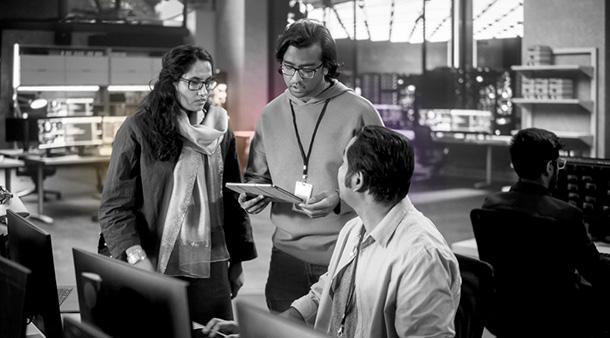
Splunk released a new global report “The Hidden Costs of Downtime,” which highlights the direct and hidden costs of unplanned downtime. The survey calculated the total cost of downtime for Global 2000companies to be $400B annually, or 9 percent of profits, when digital environments fail unexpectedly. The analysis revealed the consequences of downtime go beyond immediate financial costs and take a lasting
toll on a company’s shareholder value, brand reputation, innovation velocity and customer trust.
Unplanned downtime — any service degradation or outage of a business system — can range from a frustrating inconvenience to a life-threatening scenario for customers. The report surveyed 2,000 executives from the largest companies worldwide (Global 2000) and showed downtime causes both direct and hidden costs as defined below:
Direct costs are clear and measurable to a company. Examples of direct costs are lost revenue, regulatory fines, missed SLA penalties and overtime wages.
Clinique La Prairie (CLP), a global leader in longevity since 1931, has announced the LONGEVITY FUND, an endeavor to identify and invest in companies that revolutionize the landscape of aging, health, and wellbeing.
The Fund will focus on driving science-based advancements in longevity, guided by four core mission pillars: Medical Care, Nutrition, Movement, and Wellbeing. These pillars reflect the clinical approach that has defined Clinique La Prairie’s reputation for decades. This philosophy will be the foundation of the Fund’s investment strategy.
Through targeted investments, the Fund aims to bridge the gap between groundbreaking longevity technologies and their practical, real-world applications, dedicating resources to make

Hidden costs are harder to measure and take longer to have an impact, but can be just as detrimental. Examples of hidden costs include diminished shareholder value, stagnant developer productivity, delayed timeto-market, tarnished brand reputation and more.
The report also highlighted the origins of downtime — 56 percent of downtime incidents are due to security incidents such as phishing attacks, while 44 percent stem from application or infrastructure issues like software failures. Human error is the number one cause of downtime and the biggest offender for both scenarios.
demonstrating our commitment to advancing the frontier of longevity science. I envision the Fund emerging as a leading epicenter of innovation.”
To lead this initiative, Clinique La Prairie has partnered with Professor Stefan Catsicas, a distinguished expert with extensive experience in biotechnology, research, and large-scale investments.
these innovations accessible to those seeking them.
Simone Gibertoni, CEO of Clinique La Prairie, says: “Inspired by nearly a century of clinical work in Montreux, this strategic move marks a new milestone for the ecosystem of Clinique La Prairie,
Prof. Stefan Catsicas and Simone Gibertoni will co-chair the Investment Committee. The management team will be enhanced by thought leaders from academia, medicine, and life sciences on the Scientific Advisory Board. The complete management team will include professionals from diverse sectors, including corporate, consumer, and venture capital, ensuring a multidisciplinary approach that provides a comprehensive perspective on longevity-related investments and strategies.

Equinix has officially opened its state-of-the-art data center in Salalah, Oman, establishing a significant new interconnectivity hub that will transform global data flows.
Strategically located in the coastal city of Salalah, the new data center – SN1 – is built in cooperation with Omantel, a regional leading telecom and technology provider in the Middle East. The facility is commercially and operationally managed in full
by Equinix as a carrier neutral and open access Equinix International Business Exchange™ (IBX®) data center.
This marks the second carrierneutral data center built in Oman, following the success of MC1 in Muscat, and Equinix’s sixth facility in the Middle East, complementing its existing operations in Dubai and Abu Dhabi. SN1’s unique location in Salalah optimizes the routes of several highly strategic connections, offering a more direct and cost effective reachability for businesses and service providers across four continents.
SN1 will significantly reshape traffic flows across the Middle East and beyond, reducing latency and improving the resilience of global networks. The facility will also feature direct fiber connectivity
to Equinix’s MC1 data center in Muscat, providing carriers, hyperscalers, content providers, and cloud service providers the ability to co-locate their critical infrastructure and further enhance regional operations.
Kamel Al-Tawil, Managing Director of Equinix for the MENA region, highlighted the facility’s importance: “I’m delighted to inaugurate our latest strategic data center, further showcasing our investment in Oman and the wider Middle East. With extension to multiple subsea cables, this new hub in Salalah will transform global connectivity across different continents and aligns perfectly with our strategy of creating network-dense, highly interconnected ecosystems globally.”
The University of Wollongong in Dubai (UOWD), a leading Australian university in the UAE, is proud to announce the signing of a Memorandum of Association with Cisco, a global leader in Infrastructure, AI, and Cybersecurity solutions, and Cubit Technologies, a renowned technology provider in the region at the recently concluded GITEX, the biggest tech & startup show in the world. This collaboration aims to enhance the Cisco Networking Academy at UOWD, an initiative designed to equip students and professionals with advanced digital and networking skills critical for the rapidly evolving technological landscape.
Cisco Networking Academy

(NetAcad) is a global IT and cybersecurity education program developed by Cisco.
As part of this alliance, UOWD will offer specialized training programs through Cisco’s globally recognized Networking Academy platform, empowering students with practical, handson experience and industryaligned certifications in
areas such as cybersecurity, networking, and Internet of Things (IoT). Launched in 1997, NetAcad partners with schools, universities, and other institutions to deliver high-quality IT training and certification programs.
Prof. Mai ElBarachi, Head of the School of Computer Science, representing UOWD, expressed excitement about the collaboration: “At UOWD, we are committed to providing our students with the skills and knowledge necessary to thrive in a digital-first world. The Cisco Networking Academy will not only enhance our curriculum but also open doors for students to gain valuable certifications that are recognized globally.







Oliver Wyman has shared important insights from its recent report The New Growth Agenda: How CEOs are Navigating Emerging Shifts in Geopolitics, Trade, Technology, and People, based on a survey of more than 100 chief executives of NYSE-listed companies, many
Ahead of the Future Investment Initiative (FII) Institute Summit in Riyadh this week, under the theme ‘Infinite Horizons: Investing Today, Shaping Tomorrow’, this publication provides investors and policymakers with insights into key trends and opportunities shaping the future of industry and enterprise.
The report by the management consulting firm’s think tank Oliver Wyman Forum reveals that today’s business environment is particularly
mixed, and both promising and uncertain at the same time. It notes that: “today’s CEOs don’t have the wind at their back –they’re traveling directly into it.”
Because of this, CEOs are putting both growth and efficiency at the top of their agenda, are investing in AI, are prioritizing workforce performance, and are seeking to reduce exposure to geopolitical risk. It also highlights key trends in talent development and digital transformation that are pivotal areas of focus in Saudi Arabia, aligning with the Kingdom’s Vision 2030 goals.
Sindalah has been unveiled by the NEOM Board of Directors. First announced by His Royal Highness Mohammed bin Salman, Crown Prince and Chairman of the NEOM Board of Directors in December 2022, Sindalah’s opening marks an exciting milestone in NEOM’s progress.
Transforming Sindalah from idea to reality has been the result of an extensive two-year effort, from a 30,000-strong workforce at its peak across four local contracting partners and up to 60 subcontractors. It marks a significant step in realizing the Kingdom’s tourism ambitions under Saudi Vision 2030 and reaffirms NEOM’s ability to conceive and deliver new and exciting destinations. To celebrate this occasion, Sindalah has welcomed its first wave of invited guests to experience the island’s allure.
Located in the glistening azure waters of the Red Sea,

five kilometers off the NEOM coastline in northwest Saudi Arabia, Sindalah is a distinctive, luxury resort destination spread over 840,000 square meters. Ideally positioned 17 hours by sea from key Mediterranean destinations, Sindalah will serve as NEOM’s gateway to the Red Sea, providing easy access for European, Saudi and GCC yacht owners.
Sindalah blends the natural beauty of the island with techdriven design and architectural of which have a truly global footprint and hold interests in the Middle East region.
excellence. With the island masterfully designed by leading yachting architecture firm, Luca Dini, Sindalah offers world-class restaurants, hotels, venues and experiences. Set to welcome up to 2,400 guests per day by 2028, the island will also generate around 3,500 jobs, helping to drive the ongoing development of the Kingdom’s thriving hospitality and tourism industries, thereby supporting diversification of the economy in line with Saudi Vision 2030.

By the end of 2025, 85 million electric vehicles (EVs) – cars, buses, vans and heavy trucks –are expected to be on the road, according to the latest forecast by Gartner, Inc.
“Despite several hurdles affecting the EV market over the past few months, we are projecting the number of EVs in
use globally to total 64 million units in 2024 and increase 33% in 2025,” said Jonathan Davenport, Sr Director Analyst at Gartner. “Many companies overestimated how quickly the switch to EVs would occur. This caused those companies to delay launching new EV models. The growth in 2025 will be driven primarily by higher EV sales in China (58%) and Europe (24%), which together are projected to represent 82% of total EVs in use worldwide.”
Globally, battery electric vehicles (BEVs) in use are forecast to total almost 62 million units by the end of 2025, an increase of 35% from 2024. Plug-in hybrid electric vehicles (PHEVs) are expected to grow at a slightly slower rate
and reach an installed base of 23 million units in 2025, up 28% from 2024.
Regionally, the ownership of EVs in China is projected to continue to dwarf the rest of the world’s combined installed base through 2025 and likely the next decade. Demand for EVs will steadily grow in Europe and North America, which is projected to account for 36% of global EVs in 2024. By 2025, Gartner estimates 49 million EVs will be on the road in China, compared to 20.6 million EVs in Europe and 10.4 million EVs in North America.
By 2030, Automakers Will Enable the Recycling of 95% of Batteries from EVs to Mitigate the Risk from Raw Material Shortage
IFS has announced a strategic technology partnership to integrate an indirect tax suite within IFS Cloud, enabling enterprises to streamline, optimize and automate complex tax compliance obligations using real-time data from across the organization.
Taxation compliance has become an always-on challenge for CFOs and finance leadership teams with worldwide operations. Multi-national companies need to leverage dynamic solutions that use realtime data, available on demand, to meet global obligations and remain agile to keep pace with constantly changing regulatory environments.
Integrating Sovos’s tax and compliance software with Industrial AI-powered IFS Cloud ERP capabilities provides
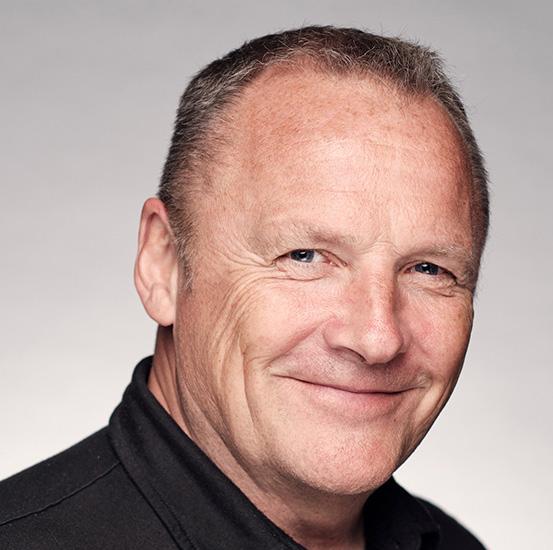
customers with the ability to automate tax compliance with rules from over 20,000 tax jurisdictions. This will help customers operating globally avoid penalties from late fees, provide continuous transaction control, avoid reputational damage from non-compliance, and maintain always-on compliance wherever they
operate. The powerful capability also helps prevent business disruption from cross border transfer of goods being delayed and supports cash flow planning.
Christian Pedersen, Chief Product Officer, IFS, commented: “I am very proud that leading third-party providers like Sovos want to connect to the IFS platform as they clearly see the opportunity with our customer base and the momentum we have in the market. Our customers have chosen IFS to benefit from the transformational capabilities and single source of data truth that our IFS.aipowered platform provides. I am delighted to introduce more ERP innovation that helps drive productivity and realize value to businesses through automation.”

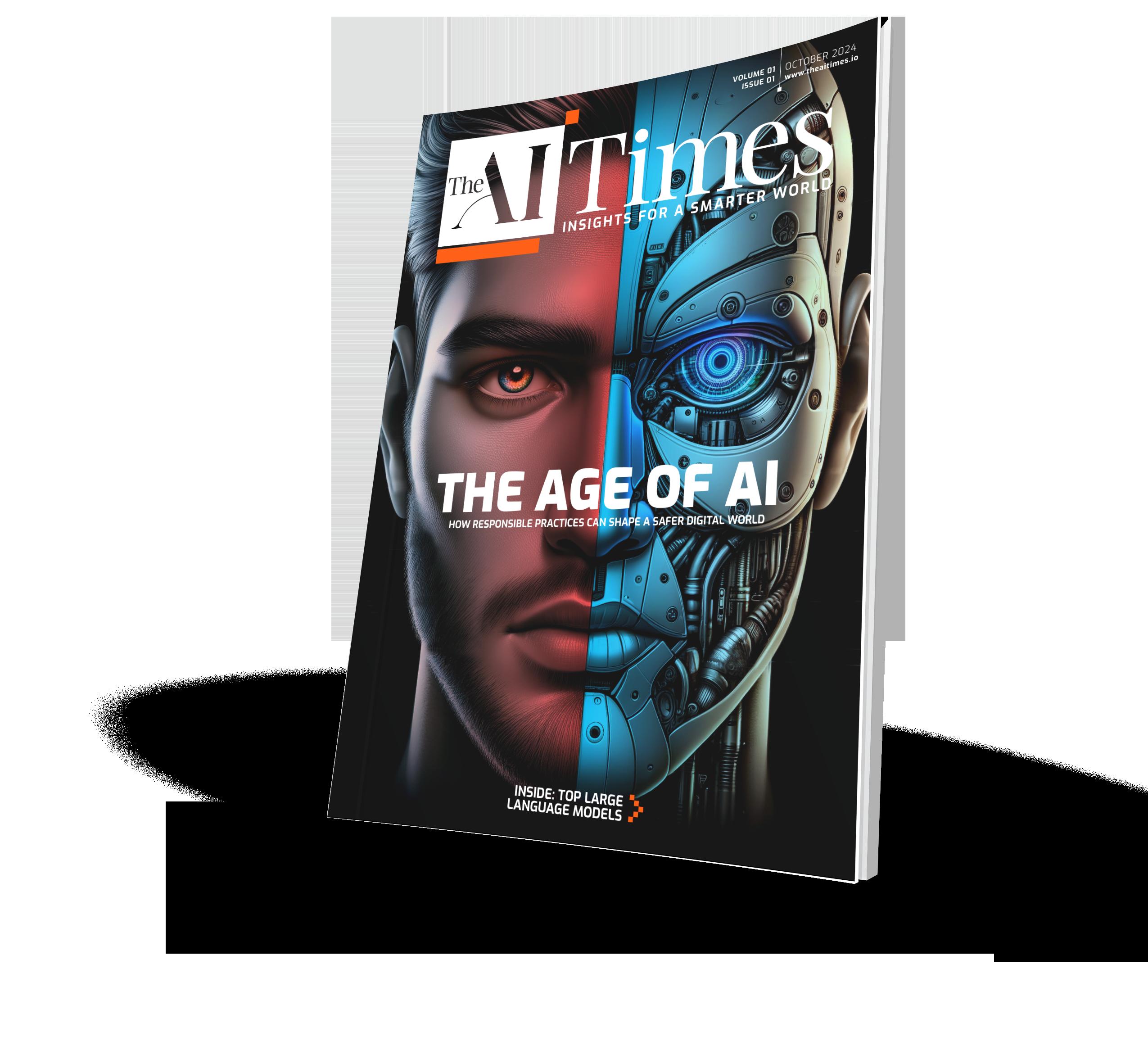
NetApp’s CEO George Kurian on empowering enterprises with intelligent data infrastructure.
HOW DO YOU TAILOR YOUR SOLUTIONS TO MEET THE UNIQUE NEEDS OF DIFFERENT
Today, about 50% of our revenue comes from outside the US. We are generating between $6.5 and $7 billion in revenue on an annualized basis. We are at the highest point we've ever been in terms of company valuation. Our intellectual property is in software, but we deliver it through systems, cloud services, and other means for our clients. We have about 12,000 employees around the world, including teams in the UAE and other parts of the Middle East. We serve large organizations in these economies, including the public sector, various government entities, large oil and gas companies, utilities, financial services, and healthcare providers—similar to our business mix in other parts of the world.
Our strength lies in what we call intelligent data infrastructure, which is a combination of both systems and software that makes it easy for clients to organize their data, access it for any application or data type, and use it to drive business progress. Over the years, we’ve seen the advantage of data-driven organizations. Independent studies by leading business consultancy firms consistently show that companies that know how to harness their data are growing faster and operating more efficiently. This trend is accelerating, as tools to analyze data are becoming more powerful. You can now analyze more types of data more efficiently than ever before.
We are now in the third era of data. The first era was about recording data—people needed computers to digitize their data, which led to data processing via mainframe computers, such as those used by banks to record transactions. The second era focused on maintaining a historical record, like keeping longitudinal
health records to track a person's health over time. Today, we are in an era of unifying all data to gain deeper insights. In healthcare, for instance, this means not only looking at an individual’s health but also correlating it with broader population data and environmental factors to determine if external conditions contribute to health issues. Genetic research, for example, can now identify predispositions to certain conditions, which is another form of unifying data.
YOU MENTIONED THAT DATA IS THE BIGGEST CHALLENGE IN AI BECAUSE THERE’S A GAP BETWEEN AI ENVIRONMENTS AND DATA ENVIRONMENTS. HOW ARE YOU BRIDGING THE GAP BETWEEN DATA AND AI?
Yes, I think we’ve spent a lot of time working with clients who are looking to use AI tools, especially since the AI market has grown since 2017-2018. We have hundreds of customers already using AI with our technology, and we’re also actively involved in early trials around the use of generative AI. While there has been significant emphasis on improving AI models— which is important—what we’ve found, based on our discussions with customers, is that models without your corporate data make those models much less relevant and useful to a business. So, to deliver real value from AI to a business or organization, it’s critical to connect the models with your data. However, this comes with several challenges. Data is constantly changing, often fragmented across the enterprise, and obtaining a unified view of it is complex. It’s also important to version your data just as you version your models, so you can explain to your customers how the model was built and trained.
What we’ve noticed, and what other industry participants have also shared, is that about 80% of the time spent in the AI workflow is
focused on data. What we’re doing is building a set of software capabilities to make it much easier to first explore the data you have, select the right data for use with AI models, synchronize model and data versions, and ensure privacy and security are well controlled as AI is implemented.
A LOT OF CORPORATE DATA IS UNSTRUCTURED. SO HOW DO YOU HELP YOUR CLIENTS COLLECT AND ANALYZE THIS DATA TO LEVERAGE AI TOOLS?
In the corporate world, a significant portion of data— about 85%—is unstructured. Unstructured data includes
PowerPoint presentations, and other forms of communication. Historically, this unstructured data was not included in a company's analytical capabilities. For instance, organizations would analyze structured data, such as customer transactions and call center interactions, but they wouldn’t integrate this with unstructured data like emails sent by account managers. As a result, organizations couldn't gain a complete understanding of their customer interactions.
Generative AI is changing that. Now, we can access and analyze unstructured data, allowing customers to gain a
operations. For example, we’ve used generative AI to enable customers to perform natural language searches on all of our technical documentation. Instead of reading through countless documents, customers can query the information in plain English— or other languages—which is a powerful tool.
For many years, we have pioneered unified data storage, unifying any type of data for any application, anywhere. We’ve also added intelligent services to protect data, quickly catalog it, and track where all of it is stored, enabling AI models to use

GEORGE KURIAN CEO NetApp
privacy. For instance, our services can identify sensitive data that should not be used in certain models, or mask data elements to ensure privacy.
Looking ahead, we see significant opportunities. We’ve already built a bridge between customers' data centers and the cloud, enabling a seamlessly integrated hybrid, multi-cloud model. Today, we see similar opportunities to bring AI to your data, without the need for a separate AI environment. We’re excited to be here in the UAE, recognizing both the ambition of the country’s leadership and the talent pool in the customer base and industry. That’s why we’re here, and we plan to invest more in this region.
A LOT OF CUSTOMERS ARE NOW MOVING THEIR AI USE CASES FROM THE POC STAGE TO PRODUCTION. HOW ARE YOU HELPING YOUR CUSTOMERS DURING THE TRANSITION PHASE?
That's a great question. It’s likely one of the most important factors for AI to move from an early technology pilot to being fully deployed within a customer base. I think there are probably three key elements to this transition.
The first element is integrating the AI infrastructure into the operational infrastructure of the company. While you may have a specialized environment for training your models, that environment now needs to be integrated into the ongoing operational fabric of the company. We have several ways of doing this, enabling you to apply AI tools to data generated on the operational side of the business. This data can then be cataloged and fed back into the training environment.
The second element, which we address in collaboration
with partners, is integrating our infrastructure with the business process infrastructure of our clients. We have announced integrations with a range of toolchains that facilitate the transition from lab environments to production.
The third element involves change management and the human factor, which we rely on industry partners for support. We provide enablement capabilities for data alongside our partners, but ultimately, this is a business process enablement challenge best handled by consulting companies, system integrators, and others in the industry.
I think there’s definitely a need for it. When you consider some of the fundamental principles of AI, which involve aggregating large amounts of data and drawing conclusions, there's an inherent risk of bias. AI could be used for stereotyping or other problematic applications. In fact, some mathematical tools have historically been used for malicious purposes, so it's essential for the entire industry—not just technology providers, but also customers— to step up to the responsibilities of responsible AI.
What does that mean in practice? It means there’s work to be done on the models themselves, as well as on the datasets used to train them. It also means that we likely need human involvement in the process, especially for selecting the data and interpreting results, to address concerns around bias. Some interesting studies have shown that, if models are trained with the right data, AI can actually
exhibit less bias than humancentered processes. So there’s an opportunity here, but I think it requires a combined effort from both technology and human oversight to ensure we’re using AI in the right way.
On a per-unit basis, storage has actually become dramatically cheaper over the last several years. It's one of the few technologies that has surpassed Moore's law in terms of cost decline. So, while there has been a steep reduction in perunit costs, the growth of data is so high that storage is still consuming a larger percentage of IT budgets.
We are seeing some interest in storage as a service from certain customers. I think it appeals to customers who are uncertain about demand and want to align their infrastructure investments with actual demand. That’s a valid use case that makes storage as a service a viable option for many organizations.
I believe the characteristics of this market align with where we’ve seen success in other parts of the world. There is a sophisticated customer base that understands the value of technology and digitization. The public sector, state-owned enterprises, and major industries here—such as oil and gas, financial services, and healthcare—are sectors where we have performed exceptionally well globally. Given our success here to date and the current market trends, we believe there is a strong opportunity for growth.

At this year’s GITEX, SolarWinds marked its 25th anniversary. We caught up with CEO Sudhakar Ramakrishna to explore the company’s journey and get his insights on the future of the tech industry.
LET’S START WITH THE 25TH ANNIVERSARY. COULD YOU TAKE US THROUGH SOME OF THE KEY HIGHLIGHTS OVER THE PAST 25 YEARS?
First of all, we are very proud to be celebrating our 25th anniversary. We were founded with a mission to simplify our customers' lives, which is what led to the development of our first product in the network monitoring space. The one thing that has remained constant over these 25 years is our focus on simplifying the lives of our customers. However, what has changed is the increasing complexity our customers face.
Twenty-five years ago, there wasn’t as much emphasis on the cloud, as many security challenges, or as much global disruption. Yet, we have been able to continue innovating while keeping simplicity at the heart of what we do. That’s the most important aspect for us, and I am incredibly proud of our team.
OVER 25 YEARS, THE TECH INDUSTRY HAS EVOLVED DRAMATICALLY. COULD YOU OFFER YOUR PERSPECTIVE ON WHAT CHANGES WE CAN EXPECT OVER THE NEXT FIVE YEARS AND HOW YOU’RE GEARING SOLARWINDS UP TO BE A DOMINANT DRIVER OF THIS CHANGE?
Over the next five years, I would say the industry's needs will continue to evolve. Every customer will be looking for improvements in productivity, reductions in complexity, and ultimately, business outcomes that justify investments in technology. Unlike in the 90s or even the early 2000s, building software is no longer limited to a specific region of the world. Technically,
anyone can develop software now, and anyone who understands customer needs can create solutions.
This means that vendors, including us, are constantly challenged to understand the true needs of customers and to find ways to meet those needs effectively. Increasingly, I notice that productivity is a key consideration for every customer. Why? Their costs are rising, their complexity is increasing, and they often don’t have enough staff to manage their environments. As a result, we must prioritize delivering productivity. I believe productivity will become an increasingly important theme going forward.
PART OF YOUR LEGACY AT SOLARWINDS WILL BE THE CULTURE OF TRANSPARENCY AND COLLABORATION THAT YOU’VE CHAMPIONED – NOT JUST AT YOUR ORGANIZATION BUT FOR THE INDUSTRY AS A WHOLE. WHAT PROGRESS HAS BEEN MADE ON THIS FRONT?
Yes, that has been a key focus for us. One of the reasons we emphasized these aspects was due to the Sunburst incident in 2020. That event was, of course, something no one could have predicted, and it could have happened to anyone. It led us to prioritize transparency as a way to unify the industry. We identified several core characteristics to guide us.
The first was transparency—telling the world what happened. Often, when something occurs in the industry, there’s a lot of spin and damage control rather than straightforward
communication. I believe that approach destroys value rather than creating it, and we want to be value creators. So transparency was the first step.
The second was communication—being open about what’s happening and engaging with others. Third, we focused on urgency. It’s not enough to just acknowledge an incident; from a customer’s perspective, what matters most is what you’re going to do about it.
The fourth characteristic is collaboration—working closely with the government, authorities, and industry partners. Finally, the last trait we emphasized was humility. In this world, no single company has all the answers. It’s
essential to stay humble and keep learning. These five principles have formed the foundation of our approach.
FINALLY, PWC PROJECTS THAT AI WILL LIKELY CREATE US$320 BILLION IN ECONOMIC VALUE FOR THE MIDDLE EAST ECONOMY BY 2030. HOW DO YOU SEE THIS ECONOMIC VALUE ACTUALLY BEING CREATED?
I mentioned productivity earlier, and AI is going to directly enhance it. There have been previous incarnations of AI, if I can call them that. I'm sure you're familiar with robotic process automation, which is a method of improving and simplifying processes by automating them, boosting
When I consider AI, I see a significant focus on its potential—not only in regions like the Middle East but globally. If used properly and ethically, AI can add tremendous value and productivity to the industry, freeing up capital for other purposes.
SUDHAKAR RAMAKRISHNA CEO SolarWinds
Think of AI and AI-based tools as a way to take this to an entirely new level.
For example, in software development, by leveraging certain AI tools, we’ve been able to reduce development time by a factor of 10. With such improvements, you can imagine how much more creative, productive, and cost-effective we can be.
When I consider AI, I see a significant focus on its potential—not only in regions like the Middle East but globally. If used properly and ethically, AI can add tremendous value and productivity to the industry, freeing up capital for other

Abu Dhabi-based Zakher Marine International taps MDR from Secureworks to bolster cybersecurity posture.
With a legacy dating back to 1984, Zakher Marine International (ZMI), , supports the region’s energy transition. ZMI owns and operates Jackup Barges & offshore support vessels, boasting the world’s largest fleet of self-propelled jack-up barges.
When Aditya Kaushik joined ZMI in June 2022 as ICT Director, he began evaluating the company’s security systems and in-house capabilities for managing threat detection, response, and intelligence.
“As a maritime organization, we have a significant need for compliance with maritime frameworks. Since our vessels operate in international waters, we must adhere to numerous regulations set by maritime authorities, which adds substantial complexity to our cybersecurity framework.”
ZMI’s cybersecurity journey began by assessing the organization’s overall landscape—its operational areas, the origins of risks (onshore or offshore), and how to implement solutions that meet industry standards and comply with specific maritime controls.
“To address these needs, we implemented a fully managed XDR service from Secureworks at the start of 2023. After evaluating multiple solutions, we chose Secureworks as our preferred

partner. Secureworks serves as our Security Operations Center (SOC), filling any skill gaps or resource limitations we may have in-house.”
Aditya says ZMI selected Secureworks mainly because it is a global organization with a strong presence in the cybersecurity sector. “An in-house team may focus primarily on internal threats, but partnering with a global provider like Secureworks offers us broader exposure to international threats. This is crucial for us, as we operate in international waters, across the region, and in multiple countries.”
According to him, Secureworks provides more than just a product or service; they bring a deep understanding of the cybersecurity landscape, global
threat trends, and the potential impact on their customers. This understanding was a key factor in ZMI’s decision to partner with Secureworks.
“We continue to rely on them for several reasons,” Aditya explains. “Secureworks offers an inclusive, open-platform approach that enables ZMI to integrate other security solutions and assess risks and threats across our entire environment. Secondly, they have a regional presence, allowing them to focus on resolving issues with excellent response times. Regular engagement with various teams within Secureworks gives us confidence that they are continuously monitoring our environment."
Lastly, Aditya emphasizes Secureworks’ strong incident response capabilities. “Their incident response discipline is critical for any organization. Knowing what the SOC team can do in the event of a threat or incident provides reassurance. These factors have been pivotal in our decision to continue with Secureworks, as we believe they are best positioned to address our cybersecurity needs,” he concludes.



Premal Patel, Vice President and Managing Director of Catalina UK, brings a unique retail perspective to the company, thanks to his senior management roles at Sainsbury’s, where he managed and revitalized the UK’s largest loyalty scheme, Nectar. His approach has transformed Catalina’s outlook, helping the business better understand the retail environment and evolving retailer and shopper behaviors to ensure Catalina’s products, services, and solutions are innovative, effective, and always one step ahead.
HOW HAS YOUR EXPERIENCE WITH SAINSBURY’S AND THE NECTAR LOYALTY SCHEME INFLUENCED YOUR APPROACH TO SHOPPER ACTIVATION AT CATALINA?
The Nectar loyalty scheme, the UK’s largest, provides a wealth of behavioral data that enables high-quality insights for shopper activation campaigns, including customer acquisition, conversion, new product trials, and reactivating lapsed customers. By combining loyalty data with POS purchase data, we gain powerful insights that allow us to individualize highvalue programs, connecting shoppers with what they want or need at the most relevant moments—building meaningful brand, retailer, and shopper connections that drive increased sales performance.
WHAT ARE THE MOST EFFECTIVE STRATEGIES YOU'VE IMPLEMENTED AT CATALINA TO DRIVE EFFICIENCY AND GROWTH, ESPECIALLY DURING CHALLENGING PERIODS?
One of our most effective strategies involves creating individualized shopper journeys where each shopper follows a specific path, receiving rewards at each step and a larger reward at the end. This approach drives store visits, incremental sales, enhanced customer loyalty, and improved marketing ROI. Another successful strategy involves connecting onand off-platform channels to drive behavior and increase sales. For example, shoppers can earn rewards shopping online, and when they visit in-store, we reconnect them through QR codes to engage in further online shopping or gamification for a more enjoyable experience.
CAN YOU ELABORATE ON HOW CATALINA’S OMNICHANNEL MEDIA SOLUTIONS ARE TAILORED TO CONNECT RETAILERS WITH THEIR CUSTOMERS IN
MEANINGFUL
Our Omnichannel Managed Media Services portfolio includes full-funnel marketing solutions that create highly targeted custom audiences and deliver personalized messages across In-store, CTV, Out-of-Home, and Digital media channels. We optimize campaigns in realtime and provide closed-loop measurement. Shoppers across demographics seek meaningful value both in-store and online, making it essential to offer relevant, privacy-compliant incentives that build loyalty and grow baskets. Our purchase-based shopper intelligence insights enable retailers to maximize marketing dollars, achieve incremental sales, and deliver a strong return on ad spend (ROAS).
HOW DO YOU BALANCE THE INTEGRATION OF DATA AND ANALYTICS WITH A DEEP UNDERSTANDING OF HUMAN BEHAVIOR TO ENHANCE RETAIL AND SHOPPER PERSONALIZATION?
With over 40 years of experience influencing shopper behavior, Catalina’s next-gen media campaigns drive awareness, conversion, and loyalty for our CPG, Retail, and Agency clients.
HOW IS TECHNOLOGY INFLUENCING THE EXPANSION OF RETAIL MEDIA IN THE MIDDLE EAST?
Although not my area of expertise, I observe that many new digital media organizations are emerging in the Middle East, partnering with retailers to create in-store digital screen experiences and out-of-home advertising that enhance the shoppinag experience. Retailers in the West are transforming into advertising and media companies, competing directly with mainstream media agencies. I anticipate a similar trend in the Middle East, where brands, agencies, and retailers will collaborate closely,

PREMAL PATEL Vice President and Managing Director of Catalina UK
Our data experts synthesize real-time purchase data and shopper insights, enhanced by predictive modeling with AI and machine learning, to create highly efficient audiences. We activate personalized media across unified channels, optimize campaigns based on realtime insights, and precisely measure sales return, while always respecting privacy.
and technology will enhance real-time measurement across various media channels.
WHAT ECONOMIC ADVANTAGES DOES RETAIL MEDIA BRING TO THE MIDDLE EASTERN RETAIL SECTOR?
Retail media compels brands, agencies, and retailers to improve shopper experiences on all platforms. Relevant offers and rewards delivered through preferred channels can boost sales. Potentially, retail media could:
• Increase product sales
• Create a data-centered industry for agencies, retailers, and brands
• Benefit the overall supply chain by driving retailer sales
• Create jobs in data, tech/AI, loyalty, and retail sectors
• Establish a new media industry
HOW DOES RETAIL MEDIA IMPROVE SHOPPING EXPERIENCES FOR CONSUMERS?
By combining digital coupons with in-store media solutions, retailers and brands can ensure equal access to offers across demographics, including those less engaged with digital platforms. Many consumers aged 18+ are not fully connected to digital shopping or savings platforms. A comprehensive retail media strategy can help these shoppers stretch their spending, enhancing their loyalty.
We caught up with Jae Evans, Oracle’s global CIO at the company’s CloudWorld event to discuss a wide range of topics including AI, multi-cloud and sustainability.
CAN YOU TAKE US THROUGH YOUR JOURNEY AS ORACLE’S CIO?
I began this role in March 2020, just as the world was on the brink of a major shift due to the pandemic. Initially, I had the chance to meet some people in person, but soon, everything had to be done remotely. My first task was to ensure, through crisis management, that our 130,000+ employees could stay productive, with systems in place for communication and collaboration. At that time, we only had a few cloud regions. Since then, we've grown to over 100 regions, and my work involved helping with the region builds and migrating our on-premises workloads to the cloud. This was a significant change, requiring extensive planning and optimization of existing infrastructure, alongside substantial change management efforts. We focused on creating a single source of truth for our assets, reducing duplication, and systematically moving to the cloud using infrastructure-as-code principles. Additionally, we built a steering committee and established reference architectures to facilitate a more streamlined process. As responsibilities expanded, I took on more roles within OCI, including operations, support, and security. It’s been a dynamic and fulfilling journey, with each stage bringing new challenges and growth.
The migration of our workloads is now complete, which was a significant achievement. Initially, I called it a 'lift and include' approach, but it has since evolved. Now, we’re leveraging more of our cloud-native capabilities rather than simply moving existing workloads to the cloud. This shift has enabled us to utilize more advanced and creative functionalities, including AI-driven tools that we developed as a result of being fully on the cloud. It’s been quite a journey for us.
LAST YEAR, YOU SHARED A GREAT EXAMPLE OF HOW ORACLE WAS USING AI IN HUMAN RESOURCES. SINCE THEN, HOW HAS ORACLE APPLIED AI WITHIN ITS OWN
We’ve deployed several AI-driven tools within our application suite, from recruiting and performance reviews to financial systems for managing transactions efficiently. For employee support, we’ve created an AI chatbot powered by Cohere, integrated with our data and knowledge base. It can assist with tasks like resetting passwords, using generative search for accurate results, and providing actionable steps, all without needing human support. This rollout enhances the user experience across our internal systems."
WE ARE CURIOUS ABOUT ORACLE’S APPROACH TO SOVEREIGN CLOUD. HOW MUCH OF THE OVERALL BUSINESS STRATEGY FOCUSES ON THIS, AND WHY DO YOU BELIEVE ORACLE IS WELL-SUITED TO SUPPORT IT?
Some of my responsibilities include overseeing OCI operations, where sovereignty plays a key role. Many nations are not only seeking data residency within their borders but also full sovereignty over data management. For instance, with our partnership with Fujitsu in Japan, data is both stored and managed by local personnel, providing a high level of sovereignty. Similarly, we offer EU sovereign regions, fully operated within EU countries to meet stringent regulatory requirements. This approach allows Oracle to meet unique compliance needs worldwide, deploying tailored cloud solutions with smaller footprints while delivering robust operational sovereignty."
IS SUSTAINABILITY A BIG PRIORITY FOR YOU?
I think it's something we all need to be mindful of, as these GPU computers are getting larger and more powerful. Just one of these machines is quite significant. I believe Clay Magouyrk showed an image in his keynote of racks forming a Super Cluster—it’s impressive. But the focus remains on efficiency, compacting our footprint, and reducing power and cooling requirements. Sustainability is key, and we’re committed to

JAE EVANS Global CIO of Oracle
renewable energy sources. Many of our data centers, particularly in Europe, already use renewable energy, and we’re continually working to improve this.
TO WHAT EXTENT IS ORACLE A MULTICLOUD ORGANIZATION NOW THAT WE’RE ENTERING THE MULTI-CLOUD ERA?
For my primary workloads, I use OCI. However, I also leverage other services, such as Software as a Service (SaaS) offerings that aren’t on OCI, making us somewhat multicloud. Multi-cloud, to me, involves using services across providers like Azure, GCP, or AWS. Many organizations use Oracle Database extensively onpremises but may have analytics or applications in other clouds. Now, with Oracle Database available on Azure and other
platforms, these businesses can securely expand their cloud capabilities with the latest autonomous features."
WHAT KIND OF LARGE LANGUAGE MODELS ARE YOU USING WITHIN ORACLE?
We’ve announced models like Cohere and LLaMA, which we see as differentiators for Oracle. We provide infrastructure for customers who want network, storage, and compute without using SaaS, Fusion, or other Oracle applications. Some customers, such as Mosaic and Adept, are even building their own large language models on our platform. Additionally, Oracle uses these models in our Fusion applications to enhance AIdriven services. This ecosystem creates a feedback loop, which strengthens the AI capabilities we offer."
LARRY ELLISON TALKED ABOUT A NEW NETWORK SECURITY TECHNOLOGY THAT SEPARATES SECURITY POLICIES FROM NETWORK CONFIGURATION.HOW DO YOU SEE THAT PANNING OUT?
Our customers have been on stage discussing this concept, and while it may sound visionary, it's very much a reality. We’ve executed these innovations with feedback from customers and remarkable engineering efforts, making rapid deployment possible. The ‘zipper technology’ Larry introduced last year addresses network security and performance. It combines highspeed network reachability with strong security policies, preventing data exfiltration and improving identity management. This setup ensures secure digital identity services, like biometrics, and prevents both accidental and intentional configuration errors, enhancing overall data protection.
Bill Farrell, Managing Partner for IBM Consulting in the Middle East & Africa, discusses the company’s role in shaping sustainable and impactful digital transformations.
HOW DOES IBM CONSULTING LEVERAGE ITS UNIQUE POSITION WITHIN A MAJOR TECH COMPANY TO DELIVER INNOVATIVE, AI-DRIVEN SOLUTIONS?
IBM Consulting leverages its unique position as the only global consultancy within a major tech company delivering AI-driven solutions. Client expectations have changed in the Gen AI era with 86% of consulting buyers actively looking for services that incorporate AI and technology assets. At IBM Consulting, we’re meeting this new era of consulting with an approach we call the science of consulting. Unlike traditional consulting, IBM Consulting is leading with evidence over opinion; democratizing our knowledge by embedding it into our platforms; using technology to enhance the expertise of our people; testing and iterating to deliver better outcomes; and collaborating and partnering openly.
A core element of our approach is IBM Consulting Advantage, our AI-powered delivery platform that serves as the foundation for our consultants to access and apply IBM’s research, data resources, and the latest AI tools, including IBM Granite Generation 3. Granite 3.0 our latest, most advanced language model suite, is now the default model within IBM Consulting Advantage due to its high performance, cost efficiency, and transparency, maximizing return-on-investment (ROI) of AI for our clients. The platform’s advanced capabilities allow IBM consultants to make data-driven recommendations and predict outcomes, providing clients with strategies that are grounded in IBM's proven deep expertise across AI, hybrid cloud, and open-source innovation.
The latest expansion of IBM Consulting Advantage contains AI agents, applications, and methods like repeatable frameworks that can empower 160,000 IBM consultants to deliver better and faster client value at a lower cost. IBM Consulting Advantage agents are accessed through an intuitive conversational interface powered by IBM watsonx, our AI and data platform, in which consultants can toggle across IBM Granite and third-party Gen AI models to select the right model for their task and ensure clients get best-fit solutions for their needs.
We believe the future of consulting is people plus software, and the future of IBM Consulting is our consultants plus IBM Consulting Advantage.
At IBM Consulting, our AI-supercharged consultants create better and faster outcomes for clients by approaching our work as a science across people, processes, partners and platform. We focus on industry-specific needs by embedding our deep expertise within AI-driven tools and customized models, addressing specific pain points and opportunities. Our Granite 3.0 suite includes a range of specialized AI Assistants designed to perform at a high level across industry benchmarks. These AI models are fine-tuned to meet sectorspecific demands, such as regulatory compliance in finance, operational efficiency in manufacturing, and patient-centered care in healthcare. We work with each client to understand their missioncritical requirements, then implement AI solutions that align with their goals.
We’ve also expanded our IBM Consulting Advantage platform to include domain-specific capabilities. IBM Consulting Advantage for Cloud Transformation and Cloud Management helps clients define and execute cloud strategies and minimize risks in cloud transformations. For business operations, IBM Consulting Advantage leverages AI to reinvent areas like HR, finance, and procurement. For example, at a global retail client, our AI-driven finance process solutions achieved a 60% reduction in invoice entry cycle time.
Our IBM Garage methodology further brings this to life as it scales transformation from conception to user-adoption through a user-centric, valueobsessed operating model. Through data-driven insights and continuous iteration, we ensure that the AI solutions we deliver are not only relevant but also adaptable to evolving needs. This agile approach accelerates innovation, allowing our clients to stay competitive and responsive to changes in their industries. By embedding these principles into every project, IBM Consulting ensures that our AI solutions drive meaningful transformations — making them purpose-built for impact across industries.
WHAT ROLE DOES IBM GARAGE PLAY IN HELPING CLIENTS ACHIEVE DIGITAL TRANSFORMATION GOALS?
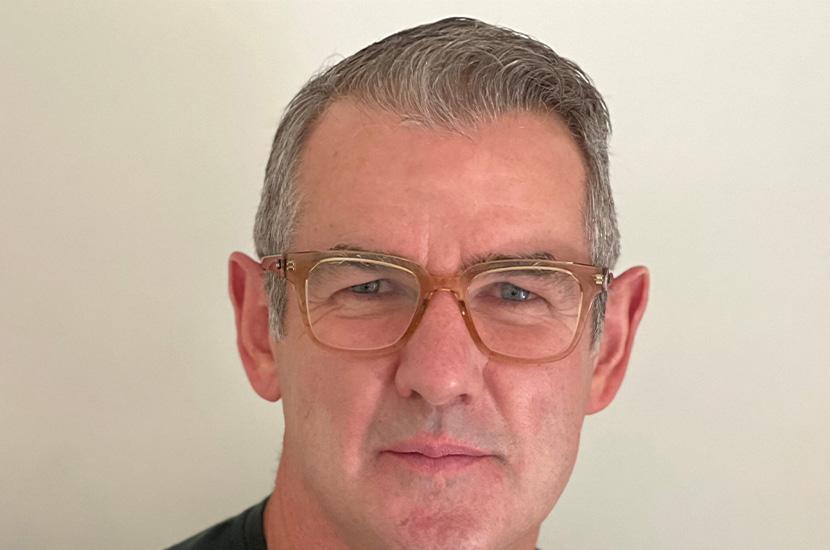
Managing Partner for IBM Consulting in the Middle East & Africa
IBM Garage is essential to our clients' digital transformation journeys. Through IBM Garage, we co-create with clients, scaling solutions that deliver measurable business outcomes. Unlike conventional consulting frameworks, IBM Garage immerses clients in an iterative, co-creation model where they work alongside IBM’s crossfunctional teams to ideate, prototype, and refine solutions in real-time. This method ensures that innovations are tailored precisely to clients' unique business challenges and goals, significantly reducing the risks and costs often associated with large-scale digital initiatives.
Clients using IBM Garage have reported efficiency improvements of up to 20% and developer tool delivery speeds 75% faster than traditional approaches, enabling them to unlock new levels of value. This approach doesn’t just drive faster results but also empowers clients to leverage emerging technologies—such as AI, cloud, and IoT — in ways that continuously enhance business processes and deliver sustained value across the organization.
An example of this impact is
our collaboration with Riyadh Air, where we implemented AI-driven systems across the airline’s check-in processes and in-flight entertainment, using IBM Consulting’s deep expertise and open ecosystem. All these capabilities were accelerated through IBM Garage to help craft seamless, personalized, and culturally enriching guest experiences across the travel journey.
COMPANIES LIKE AWS, MICROSOFT, AND ADOBE ENHANCE IBM CONSULTING’S ABILITY TO PROVIDE END-TO-END SOLUTIONS?
We work side by side to fasttrack innovation, design, build and operate high-performing businesses together with our clients and strategic partners. Our strategic alliances with AWS, Microsoft, Adobe, and others enhance IBM Consulting’s ability to offer comprehensive solutions. These partnerships allow us to combine IBM’s strengths— like AI, hybrid cloud, and data analytics—with our partners’ specialized platforms to address a full spectrum of client challenges across sectors.
For example, as an AWS Premier Partner, we leverage AWS’s cloud infrastructure to support clients in accelerating AI implementations, modernizing applications, and deploying secure, scalable solutions. Similarly, our collaboration with Microsoft enables us to facilitate seamless cloud transformations, integrating Microsoft’s suite of business applications with IBM’s consulting and technical capabilities to optimize workflows, enhance collaboration, and create resilient IT environments. With Adobe, we focus on crafting personalized, data-driven digital experiences that elevate customer engagement and brand loyalty through Adobe’s market-leading creative and marketing platforms. These collaborations enable us to leverage IBM’s advanced technology stack alongside our partners' capabilities, meeting complex business needs with trusted, cross-platform solutions.
HOW DOES IBM CONSULTING INCORPORATE SUSTAINABILITY INITIATIVES INTO ITS CONSULTING STRATEGIES?
Sustainability is a core focus within IBM Consulting, integrated directly into our strategies through AI-driven tools, responsible sourcing, and by enabling clients to meet their own sustainability targets. IBM believes that sustainable enterprises need to be responsible, equitable and viable to advance the quadruple bottom line. Our sustainability consulting advisory services guide clients on developing business strategies, managing ESG data, implementing risk management and reporting practices, navigating energy transitions, and the competitive advantage of their journey to become a sustainable enterprise.
Aspire, business development arm of Abu Dhabi’s Advanced Research Technology Center, officially launched it new autonomous race car at Gitex. We caught up with Khurram Hassan, Director, AbuDhabi Autonomous Racing League (A2RL) at Aspire, to discuss the future of autonomous racing.

PLEASE TELL US ABOUT ASPIRE.
Aspire is one of the fundamental pillars of the Advanced Technology Research Council. If TII is conducting world-class research, we focus on world-class competitions and world-class development, along with the technology that comes out of TII. The third arm is VentureOne, which handles commercialization. I work within A2RL, which is one of our grand competitions—specifically, the Abu Dhabi Autonomous Racing League. A2RL essentially serves as a magnet for innovation. We use racing as a way to attract the best teams, talent, and technology to Abu Dhabi.
WHAT KIND OF TALENT ARE YOU LOOKING TO ATTRACT?
When looking at autonomous driving, if you break it down, one of the key elements is, software. I rented a Chinese electric car, and I found that many of the features within both cars were very similar in terms of driving experience. However, on the final turn, the software became confused between a traffic light and a speed camera, triggering an
emergency brake. What you come to realize is that it's no longer about the car’s drivability— it's really about the software inside the car. So, finding the best coders who can develop algorithmic coding that allows cars—and the future of mobility—to operate on sound, rigorously tested software is critical. That’s what A2RL offers: the opportunity for teams to test their software and algorithms.
That’s where A2RL stands out—it provides a test bed for evaluating various aspects of autonomous technology. For example, a sensor company approached us and said, "We’ve never tested our equipment above 70 kilometers per hour because the air base we use has speed limitations." By testing their sensors on an A2RL car, they can now reach speeds of 300 kilometers per hour. Essentially, A2RL becomes the ideal test bed for LIDAR, radar, and sensor companies, giving regulators and the public greater confidence in the technology being deployed on our roads.

KHURRAM HASSAN
Director, AbuDhabi Autonomous Racing League (A2RL) at Aspire
Well, we’ve already created one or two new startups as a result of this project. Startups are emerging in the AI and autonomous space from TII. Many of our partners are building teams and companies on the back of this technology, leveraging various loans they’ve received.
Actually, a significant challenge we face with cars today is that much of the technology isn’t thoroughly tested. While many of the mechanical elements of cars undergo rigorous testing, the software components often do not. With all these new cars coming to market, equipped with autonomous mobility elements and software, it’s crucial to establish a proper testing ground.
Last year, we conducted a "man versus machine" challenge. If you remember, in chess, the computer beat the human, and the same happened with Go. Last year, we held a race between F1 pilot Daniil Kvyat and our autonomous car in identical vehicles. The human achieved a lap time of 1 minute 44 seconds, while, three months prior to the race, our coders' best time was 3 minutes per lap. By race day, they had reduced that to 1 minute 54 seconds—just 10 seconds behind the human. Essentially, AI is rapidly advancing in motorsports, and we believe that within a year, AI could get very close to matching the top human performance. There are many different test cases we are running through A2RL.
Mogens Holm, Partner & Associate Director at Boston Consulting Group, discusses the path to a low-carbon future.

WHAT ROLE DO YOU THINK HYDROGEN WILL PLAY IN THE TRANSITION TO LOW-CARBON ECONOMIES, GIVEN HOW MUCH FOCUS IT’S GETTING?
Hydrogen already has competitive applications in specific areas, especially where its chemical properties are advantageous. For example, in refineries, there’s clear demand both outside and within the MENA region. Many refineries are exploring how they can decarbonize by replacing conventional hydrogen with lowcarbon alternatives. They have options, like implementing carbon capture and storage at their facilities or adapting existing units to handle lower-carbon fuels.
DO YOU THINK IT MAKES SENSE FOR THESE REFINERIES TO BUILD A LOW-CARBON MOLECULE BUSINESS ALONGSIDE THEIR TRADITIONAL ENERGY OPERATIONS?
Yes, I think so. We’re working with several major players in the region, and it’s natural for them to consider this shift. Their clients, especially in the LNG business, are increasingly asking for low-carbon product options. Companies are somewhat pressured to develop these offerings because their clients are requesting low-carbon
alternatives. There’s still the issue of cost and delivery timelines, so it’s a bit of a mixed picture. For example, in certain markets like Japan and South Korea, we see momentum with refineries focusing on ammonia production, but in other areas, progress is slower.
WHAT ARE THE TECHNICAL BARRIERS TO PRODUCING AND STORING HYDROGEN AT SCALE?
This is an interesting question with different answers depending on the type of hydrogen. For gas-based hydrogen and power-based hydrogen (or “green hydrogen,” produced from renewable or nuclear power), large-scale production is essential.
ARE REGULATIONS AND GOVERNMENT POLICIES DRIVING ENERGY COMPANIES TO FOCUS ON LOWCARBON MOLECULES?
Yes, it’s both regulatory pressure and internal business strategies. Companies want to transform and need to figure out how to position themselves in the low-carbon value chain. For example, some large shipping companies are starting to purchase methanol and ammonia, not necessarily for their entire fleet, but enough

MOGENS HOLM Partner & Associate Director at Boston Consulting Group
You can’t rely solely on the existing grid, especially in the MENA region, so dedicated infrastructure is required. Oman is a great example; they’ve been proactive about tendering infrastructure first, which allows developers to share those infrastructure costs. In other areas, we see delays when governments and regulators haven’t planned for the necessary infrastructure.
to understand the logistics and operational challenges. It’s often a gradual process; they start with a small percentage and increase as they gain confidence.
DO YOU THINK CARBON CAPTURE AND STORAGE (CCS) WILL GO MAINSTREAM, OR IS IT ALREADY MAINSTREAM?
CCS still requires significant support and coordination. One challenge in the MENA region is limited access to CCS infrastructure. There is some infrastructure, but more coordination is needed between emitters and the government to share the costs of building a CCS network. This coordination is still a work in progress.
HOW DO YOU SEE THE LOWCARBON ECONOMY EVOLVING IN THE NEXT THREE TO FIVE YEARS?
In the MENA region, specifically, we need progress around CCS infrastructure. For low-carbon, gas-based hydrogen solutions to succeed, CCS must be costeffective and widely accessible. There’s a real need for faster development and more costeffective solutions, with all stakeholders aligned to drive the necessary speed. That’s a major challenge in this region, and coordination is essential to making it happen.
Kalyan Kumar, Chief Product Officer, HCL Software, explains how the company’s portfolio remains competitive and relevant in a fast-evolving technology landscape.
HOW DO YOU ENSURE THAT HCL SOFTWARE'S PRODUCT PORTFOLIO STAYS COMPETITIVE AND RELEVANT IN THE RAPIDLY EVOLVING TECHNOLOGY LANDSCAPE, ESPECIALLY WITH THE RISE OF AI AND AUTOMATION?
HCL Software ensures its product portfolio remains competitive and relevant in the rapidly evolving technology landscape by leveraging a range of strategies.
First, the company emphasizes Continuous Innovation and Research. HCL Software invests significantly in research and development to stay ahead of technological advancements, with an internal R&D wing dedicated to this purpose. Additionally, it maintains innovation labs where teams can explore new technologies and experiment with emerging trends such as artificial intelligence (AI) and automation, ensuring that they stay at the forefront of industry innovation.
Another critical approach is through Strategic Acquisitions and Partnerships. HCL Software has a history of acquiring promising technology companies, which allows it to expand its product portfolio and capabilities. Furthermore, the company forms strategic partnerships with other technology providers to facilitate joint product development and broaden market reach. Through its Startup SYNC program, HCL Software also collaborates with a large set of startup partners in an open innovation ecosystem, identifying niche solutions and exploring potential synergies with its existing products and platforms.
HCL Software is also focused on AI and Automation Integration. It actively integrates AI capabilities into its products to enhance their functionality, support better decision-making, and automate repetitive tasks, providing customers with more efficient and intelligent solutions.
Additionally, Market Analysis and Trend Monitoring play a vital role in HCL Software’s strategy. The company conducts thorough market research to identify emerging trends and customer needs, feeding this information back to its R&D teams to ensure they are aligned with current and future market demands.
WHCL Software’s extensive product portfolio is categorized into seven key areas:
• Business Applications and Industry Solutions Software – To deliver memorable customer experiences.
• Total Experience Software – Orchestrating delightful experiences on a platform of trust.
• Data and Analytics Software – Enabling confident data-driven organizations.
• Intelligent Operations Software –Humanizing AI to elevate IT operations.
• Security and Compliance Software –Ensuring secure DevOps and compliance from applications to endpoints.
• Specialized Software – Purpose-built solutions for niche use cases.
• Sovereign Collaboration Software –Providing data autonomy with secure and flexible solutions.
Finally, HCL Software’s innovation strategy includes both incremental and radical innovation, ensuring that it remains competitive by constantly adapting to the latest technological advancements.
HOW DO YOUR TOTAL EXPERIENCE SOLUTIONS HELP BUSINESSES DELIVER SEAMLESS AND SECURE CUSTOMER EXPERIENCES ACROSS DIGITAL TOUCHPOINTS?
Organizations often struggle to maximize ROI from digital transformation projects, including those aimed at customers, employees, citizens, and channel partners.
Onboarding new digital services and creating digital products is often hindered by reliance on fragmented and extensive pro-code efforts, multiple development tools, multiple software stacks, and inconsistent functionality and design. This adds cost and complexity and makes it more challenging to maintain and evolve quickly.
Also, today’s experiences intersect with content, processes, and applications needed to create tailored and targeted experiences that drive adoption and repeat usage.
At HCL Software, our Total Experience solutions are designed to enable organizations to create cohesive and secure digital experiences by merging all digital touchpoints. Through platforms like HCL Volt MX and HCL Digital Experience, we aim to help businesses seamlessly
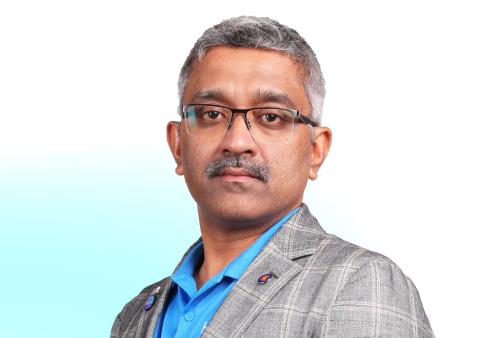
KALYAN KUMAR
Chief Product Officer, HCL Software
bridge customer and employee experiences, ensuring every interaction reflects the brand’s value, supports end-users, and empowers employees.
CAN YOU EXPLAIN THE ROLE HCL’S SOLUTIONS PLAY IN POSTQUANTUM CRYPTOGRAPHY AND DATA PROTECTION?
HCLSoftware is doing focused incubation activities around Post Quantum Cryptography. We are running a couple of internal pilot projects around CRYSTALS Kyber algorithm, to check the feasibility and migration modalities. We are also trying to use our in-house capability of Quantum Random Number Generation, to create quantum safe encryptions. The most important thing here for us is to be crypto agile are working on that front.
Our comprehensive data privacy and cybersecurity program positions us to respond to the constantly evolving regulatory and security landscape. Cybersecurity
practices are aligned with the Global NIST cybersecurity framework and industry standards such as ISO 27001. Our privacy program is supported by an enterprise-wide Privacy and Data Protection Framework that is tailored to accommodate the company’s operations, the nature, scope and sensitivity of personal data, as well as legal, regulatory and contractual obligations, risks to data and defined privacy principles.
We have established minimum baseline control standards and a defense-in-depth approach to ensure privacy and cybersecurity controls are embedded throughout the asset, identity and data lifecycle.
COULD YOU ELABORATE ON HOW YOUR AI AND INTELLIGENT OPERATIONS SOLUTIONS ARE DRIVING INNOVATION FOR ENTERPRISE IT MANAGEMENT?
HCL Software's AI-fueled framework is designed to transform & elevate business IT and Operations by harnessing advanced
artificial intelligence and machine learning technologies, enabling a software-defined organizational strategy with three primary tenets: Synergize, Strategize and Streamline, and ensure your organization is future-ready.
• Synergize: Boost workplace productivity by leveraging the digital workplace and build agile, scalable IT frameworks.
• Strategize: Align all departments and functions with strategic goals to drive growth, customer retention, and deliver business value through superior service and innovative solutions.
• Streamline: Simplify business processes, enhance compliance and risk measures, and secure your operations.
Our product portfolio is designed to build a truly digital, scalable and secure enterprise with AI and Cloud at its heart. The solutions empower businesses by delivering real-time insights, end-toend visibility across IT and business operations, robust endpoint security, streamlined service delivery, and assured compliance.
We are currently serving 2500+ customers across US, EMEA and Asia, backed by 22 years of complex global IT ops management services. We are managing 100M+ endpoints in 47 countries.
By leveraging these AI and Intelligent Operations capabilities, enterprises improve on their operational efficiency, reduce costs, enhance customer satisfaction and gain a competitive advantage.
Ilyas Mohammed, Chief Operating Officer at AmiViz, discusses the company’s vital role in strengthening the cybersecurity ecosystem in the region.
AMIVIZ IS KNOWN FOR ITS INNOVATIVE CYBERSECURITY SOLUTIONS TAILORED FOR THE MIDDLE EAST MARKET. WHAT UNIQUE SOLUTIONS OR PARTNERSHIPS ARE YOU GOING TO HIGHLIGHT AT BLACK HAT, AND HOW DO THEY ADDRESS SPECIFIC REGIONAL CHALLENGES?
At Black Hat MEA 2024, AmiViz will showcase its role as a leading cybersecurity distributor, focusing on advanced solutions tailored for Middle Eastern enterprises. By partnering with industry leaders such as BlackBerry, AlgoSec, Check Point, and Darktrace, AmiViz addresses the specific cyber challenges of the region, including advanced threats targeting critical infrastructure, secure application connectivity, and cloud security.
The collaboration with BlackBerry emphasizes cybersecurity and critical event management, crucial for protecting enterprises against both digital and physical disruptions. AlgoSec enhances application connectivity security, ensuring seamless, secure operations in increasingly complex IT environments. Check Point offers comprehensive enterprise security solutions, from network defense to mobile protection, helping organizations maintain secure, endto-end coverage. Darktrace’s ActiveAI provides proactive defense with AI-driven threat detection, an essential tool for combating evolving cyber threats.
We also provide Intercede’s Credential Management Software, which ensures secure identity verification, allowing organizations to manage digital credentials and protect sensitive data. In addition, Bitsight’s Cyber Risk Management platform assesses and monitors cyber risk, offering valuable insights to enhance security posture and reduce vulnerabilities.
Our partnerships with Sysdig and EfficientIP further bolster cloud-native security and network automation, helping organizations secure cloud adoption and improve operational efficiency. Fidelis Security’s proactive XDR platform, along with ZinadIT’s cybersecurity training solutions, addresses regional needs by ensuring both technological resilience and a skilled, wellprepared workforce.
AmiViz’s portfolio and partnerships
underscore its commitment to supporting digital transformation in the Middle East while ensuring robust, adaptive cybersecurity for Saudi enterprises amid escalating cyber risks.
CYBER THREATS ARE CONTINUALLY EVOLVING, ESPECIALLY IN CRITICAL SECTORS LIKE FINANCE AND HEALTHCARE. CAN YOU SHARE HOW AMIVIZ'S SOLUTIONS ARE ADAPTING TO MEET THESE EMERGING THREATS AND WHAT NEW TECHNOLOGIES ARE ON THE HORIZON?
We understand that cyber threats in critical sectors like finance and healthcare are becoming increasingly complex, requiring adaptive, robust defenses. To meet these challenges, we offer advanced, AI-driven solutions that continuously evolve to detect, prevent, and respond to emerging threats in real time.
Our partnerships with industry leaders like BlackBerry, Darktrace, and Fidelis Security equip organizations with proactive and intelligent defense mechanisms. For example, Darktrace’s AI technology helps healthcare providers swiftly detect anomalies and potential data breaches, vital for safeguarding patient information. In finance, our solutions from Check Point and Fidelis Security offer multi-layered defenses against threats such as ransomware, fraud, and insider attacks, while supporting regulatory compliance.
Looking forward, AmiViz is focusing on integrating zero-trust architectures and strengthening cloud-native security to further protect digital assets. These technologies, coupled with machine learning advancements, enhance our clients’ ability to predict and prevent attacks before they occur. We are also exploring advancements in extended detection and response (XDR) to provide a unified approach to threat management, reducing response times and mitigating risks across sectors.
By staying at the forefront of cybersecurity innovation, AmiViz ensures that our clients are prepared to defend against the evolving threat landscape in these high-stakes industries.
IN TERMS OF COMMUNITY ENGAGEMENT AND KNOWLEDGE SHARING, WHAT ROLE DOES AMIVIZ

ILYAS MOHAMMED
Chief Operating Officer at AmiViz
SEE ITSELF PLAYING WITHIN THE CYBERSECURITY COMMUNITY AT EVENTS LIKE BLACK HAT AND BEYOND?
At AmiViz, we view community engagement and knowledge sharing as essential components of our mission within the cybersecurity landscape. Events like Black Hat MEA provide an invaluable platform for us to connect with industry professionals, share insights, and collaboratively address the region’s most pressing cyber threats. As a leading value-added distributor in the Middle East, we aim to foster an environment where cybersecurity knowledge is not only accessible but also actionable for organizations of all sizes.
Our partnerships with global cybersecurity leaders, such as BlackBerry, Darktrace, and Check Point, allow us to bring the latest advancements to the Middle East, supporting local enterprises in adopting robust, up-to-date defenses. By hosting live demonstrations, panel discussions, and workshops at events like Black Hat, we provide hands-on experience and
practical guidance, empowering attendees to apply new skills and strategies to their own organizations.
Beyond major events, AmiViz is committed to continuous education through webinars, whitepapers, and training sessions that we host or cosponsor with partners. These initiatives are designed to raise awareness about evolving threats and share best practices for maintaining resilient security postures in sectors like finance, healthcare, and government.
We also prioritize building relationships within the local cybersecurity community, fostering a network where knowledge can flow freely between experts, practitioners, and organizations. Through these efforts, AmiViz strives to empower the cybersecurity community across the Middle East, enabling all stakeholders to better protect their critical digital assets in today’s rapidly evolving threat landscape.
WITH CYBERSECURITY TALENT SHORTAGES WORLDWIDE, HOW IS AMIVIZ WORKING TO SUPPORT SKILL
We recognize the critical need to bridge the cybersecurity talent gap, especially in the Middle East, where demand for skilled professionals is high. Our approach focuses on empowering security teams through targeted training, resources, and collaborative partnerships with industry leaders.
We work closely with partners like ZinadIT, which specializes in cybersecurity training solutions, to provide organizations with high-quality, practical training that equips teams with essential skills. Through workshops, certification courses, and hands-on labs, we help security teams build competencies in areas like threat intelligence, endpoint protection, and incident response.
Additionally, AmiViz is committed to ongoing education initiatives beyond formal training. We regularly host webinars, knowledgesharing sessions, and industry roundtables to ensure that security teams across the region stay informed about the latest threats and defenses. By leveraging events like Black Hat MEA, we provide local professionals with access to cutting-edge tools and insights from our global partners, allowing them to gain practical experience and expand their skill sets.
Through these initiatives, AmiViz strives to create a stronger cybersecurity talent pool, supporting regional organizations in developing resilient, well-prepared teams that can address the evolving cyber threat landscape with confidence.
Zurich Insurance recently released the fourth edition of its annual Future of Work survey. We spoke to Zubair Siddiqi, head of digital and alliances at Zurich Insurance about the key findings from the survey.
PLEASE TELL US ABOUT YOUR ROLE.
I lead the Market Management function for Zurich in the Middle East. This function encompasses marketing, communications (both internal and external), and public relations. On the internal side, we focus on employee communications, while externally, we handle the brand's PR. Additionally, I oversee affinity partnerships, which include nontraditional collaborations, and Customer Value Management. In the life insurance industry, where our customers typically stay with us for an average of 15 years, we focus on partnering with them for upsell and cross-sell opportunities, helping them find policies that best meet their needs. I also manage market insights, which contributes to a broad portfolio of responsibilities within the Market Management function I lead for Zurich in the Middle East.
SO, WHAT WAS THE PURPOSE OF THIS SURVEY?
As the tagline says, it's about 'inspiring the benefits revolution.' I think we're in an era where multiple generations are working together. We have millennials rising in their careers, and Gen Z entering the workforce. These four or five generations bring diverse perspectives and approaches, and our message is about finding a value proposition that meets the needs of each generation. With the future of work in focus, it’s about inspiring a revolution in employee benefits that fosters connection and dialogue between employers and employees. Our report highlights simple themes centered around people—our most important asset—and the human-centered approaches needed to support them.
WHAT DRIVES ZURICH TO THINK ABOUT THE FUTURE OF WORK AND CONDUCT THIS RESEARCH?
This is something we've been doing annually, and I believe this is the fourth edition of the report. Each year, it has grown significantly. What started as a look into the future of work in the UAE has expanded to cover the entire GCC, so this year’s report includes insights from Saudi Arabia, Qatar, Bahrain, and other key GCC countries. The purpose of this report is to understand what motivates both employees and employers and to provide valuable insights that

ZUBAIR SIDDIQI
Head of digital and alliances at Zurich Insurance help employers connect more effectively with their workforce, ultimately driving the right initiatives forward.
TALKING ABOUT THIS REPORT, WHAT IS THE CRUX OF IT? WHAT CHANGES HAVE YOU OBSERVED COMPARED TO LAST YEAR?
When we first launched the report, it focused on talent migration, with employees being restless and moving around. Over the years, especially in this post-COVID era, people have started to settle. Things are picking up again, and one key finding, in my view, is that people are becoming more comfortable but are also increasingly demanding more from their employers. The three critical pillars in this year’s report are personalization, empowerment, and well-being. Each of these pillars reflects what employees want and need from their employers. Today, factors like financial literacy, guidance on financial planning, and workplace savings have become essential—not just perks. This is the core of the report. From the evolution of this research, which started as UAE-specific and has expanded to the entire GCC, we see that trends remain consistent. Initially, it was all about talent movement; now, in a post-COVID world, it’s more about employees knowing what they want and expecting more from their workplaces.
CONSULTING | RESEARCH | ON DEMAND


RESEARCH
INSIGHT & BENCHMARKING
EMERGING TECHNOLOGIES
GOVERNANCE
RISK & COMPLIANCE
CYBER SECURITY
DIGITAL TRANSFORMATION
DEOPS & DIGITAL INFRASTRUCTURE
ERP & CRM
Ram Vaidyanathan, Chief IT Security Evangelist of ManageEngine, on how to enhance healthcare security with cloud access security brokers".

The healthcare industry increasingly relies on cloud applications to manage patient data and deliver healthcare services. In this climate, the challenge is ensuring the security and privacy of sensitive information. This data can be accessed, read, and tampered with by cyberattackers and malicious insiders.
Cloud access security brokers (CASBs) play a crucial role in solving this challenge. They can be utilized in the healthcare sector to enhance data security, ensure regulatory
One of the primary concerns in the healthcare sector is protecting sensitive patient data from unauthorized access and breaches. CASBs address this challenge by providing comprehensive visibility into each application and its associated activities. Rules can be configured to ensure that access to an application only takes place if certain conditions are met.
For example, access can be blocked if a user uses an untrusted browser or if they access it during a disallowed window of time. An upload to the cloud or a download from the cloud can also be blocked based on variables such as file size, file name, file type, etc. Healthcare organizations must comply with
stringent regulations such as the Health Insurance Portability and Accountability Act (HIPAA) in the United States, which mandates the protection of patient health information. CASBs play a vital role in helping organizations adhere to these regulations by providing continuous monitoring and detailed auditing of cloud environments.
CASBs generate comprehensive reports and alerts for compliance violations, enabling quick remediation and ensuring that the organization's data management practices align with regulatory requirements. This proactive approach to compliance helps healthcare providers avoid costly fines and reputational damage associated with non-compliance.
With the proliferation of cloud applications, healthcare organizations need visibility into all cloud services used within their environment. CASBs offer advanced shadow IT discovery capabilities, identifying unauthorized applications that physicians and other employees might be using without IT approval. This visibility allows IT administrators to manage and secure all cloud services effectively and mitigate risks associated with unsanctioned applications.
The accelerated adoption of telehealth and remote work in the healthcare sector further
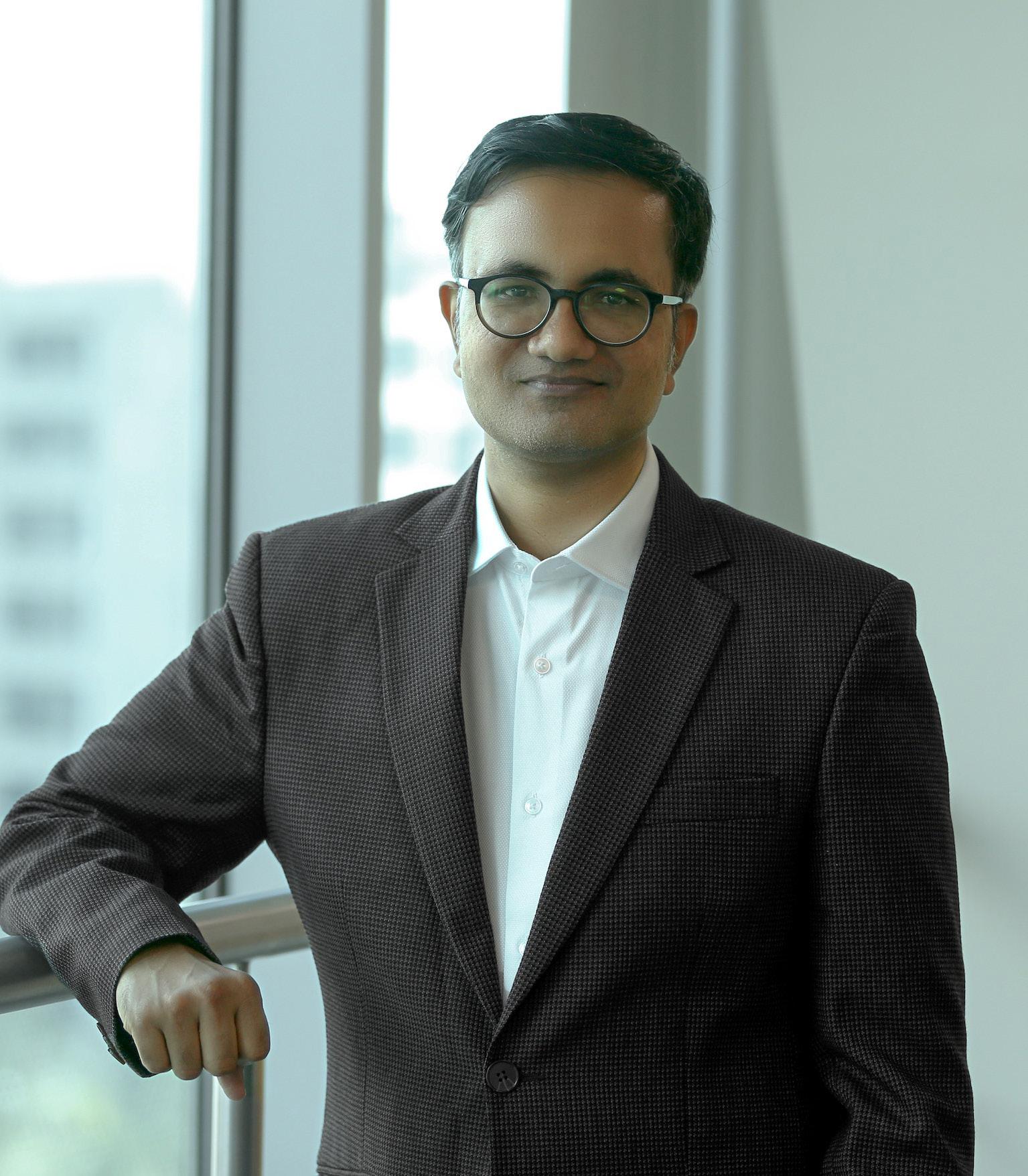
RAM VAIDYANATHAN Chief IT Security Evangelist of ManageEngine
Moreover, CASBs provide granular access control, allowing organizations to enforce security policies based on locations and devices. For instance, access to sensitive patient data can be restricted, ensuring that information is accessed on a need-to-know basis.
underscores the need for CASBs. CASBs support these trends by securing access to cloudbased healthcare applications from remote locations. They integrate with identity and access management solutions to enforce strong authentication methods, such as MFA, to ensure that only authorized users can access sensitive data from remote environments.
By securing remote access, CASBs enable healthcare professionals to provide care and manage patient information securely, regardless of their location. This capability is essential for maintaining the continuity of healthcare services while protecting patient data in a remote work setting.
During a telehealth consultation, a physician may review a patient’s medical history, lab reports, and previous visit notes directly within the cloud application that is being used. The CASB will monitor any data the physician might share during the session, ensuring that sensitive patient information does not leave the secure environment. It will also ensure that documents shared between the two individuals are not shared to a third party over the cloud.
CASBs have become indispensable tools for data security, regulatory compliance, and secure remote work as healthcare organizations continue to embrace the cloud. By leveraging the advanced capabilities of CASBs, healthcare providers can protect sensitive patient information, comply with stringent regulations, and mitigate the risks associated with cloud adoption. CASBs will remain a critical component of the sector's cybersecurity strategy as the healthcare landscape evolves.
The promise green hydrogen holds for the global energy revolution will be realized through information ecosystems, writes Roy Calder, Industry Principal – New Energies, AVEVA.
Green hydrogen represents a major piece of the puzzle in meeting growing energy needs. The strong growth in hydrogen demand and the adoption of clean technologies for its production are poised to drive global decarbonization efforts, particularly in more challenging sectors such as heavy industry and transport.
In the future, hydrogen-powered vehicles could enhance air quality and promote energy security. Hydrogen can also store energy from renewable sources, making it a critical component of the transition to a low-carbon economy. Ultimately, a globally sustainable and reliable non-fossil fuel energy system could be realized through hydrogen, utilizing renewable energy sources instead of fossil fuels like natural gas.
But while green hydrogen offers many benefits, there are challenges to its widespread adoption. Significant investment is required to develop the infrastructure for hydrogen production, storage, transportation, and utilization.
The production of green hydrogen is currently more expensive than hydrogen produced from fossil fuels (grey hydrogen) or using carbon capture (blue hydrogen). However, costs are expected to decline with technological advancements and economies of scale.
What’s more, energy conversion efficiency still leaves much to be desired. The process of converting water to hydrogen and then using hydrogen for energy involves significant energy losses. The round-trip efficiency of hydrogen production, storage, and utilization needs improvement.
Through addressing these challenges, green hydrogen is poised to play a pivotal role in energy transition.
Given the diverse networks within the global
energy ecosystem, commencing the green hydrogen era will require a considered approach.
How we produce, transport, and consume green hydrogen needs to be broader and encompass more stakeholders. Such efforts call for rigorous regional and global collaboration.
The global green hydrogen economy is challenging because it is still uncharted. To succeed, its burgeoning ecosystem must adjust to unique requirements and many unsettled elements. Optimizing production will rely on visibility across the value chain. Ultimately, it will be down to data connectivity to optimally power global green hydrogen.
As the green hydrogen ecosystem extends well beyond that of any current energy source, is more complex and has more stakeholders, a strategy is key to success.
ECOSYSTEM VISIBILITY IS A MUST
Improving how green hydrogen is processed and ultimately used by the consumer will require extrapolating insights from existing plant projects, understanding the yields of our most viable technologies, and determining the role that utility companies will play in the future green hydrogen ecosystem.
Today’s software solutions can help save costs and optimize hydrogen plant efficiency by collecting and measuring operational data of plant infrastructure through embedded IoT devices. These data inputs are used to recreate digitaltwin models of plants to optimize operations and yield improved plant performance. Across the world, swathes of individual industrial plants are already incorporating digital twins into their daily operations.
An example can be seen in German engineering giant Thyssenkrupp, which has been commissioned to construct an 88-megawatt water electrolysis plant for Hydro-Québec –

Industry Principal – New Energies, AVEVA
One of the most important factors for the success of upcoming green hydrogen economy will be ‘visibility’. This requires a strong data infrastructure foundation, as knowing when to profitably produce, transport and store hydrogen or when to convert it into other chemicals will be dictated by many factors, including regulated hydrogen reserve levels, the price of steel, ammonia or fertilizer and an oversupply of renewables generation.
one of the largest hydropower suppliers in Canada. The plant will produce 11,100 metric tons of green hydrogen annually. Both the hydrogen and the oxygen, a by-product of the electrolysis process, will be used to produce biofuels for the transportation sector.
ThyssenKrupp’s engineering team is using green hydrogen plant design software, together with data management technology to optimize operational design. By using data visualization tools ThyssenKrupp is able to increase operational efficiency, improve collaboration and drive sustainability throughout its design process and project execution.
On a global scale, connecting up the hydrogen ecosystem creates a path to quicker plant set up, cost-effective operations, and production efficiency.
Engineering advancements today must be paired with a unified common data infrastructure to generate positive outcomes for all. Optimized data flows and accessible data across the value chain will provide the global green hydrogen ecosystem with the best opportunity to thrive.
Patrick Smith, Field CTO EMEA, Pure Storage, on understanding reporting and impact accounting.
We need to take sustainability seriously at a C-suite level. Not just to signal altruism, but because investors, consumers and workforces demand it. Also, because energy savings, including water and electricity, are more vital than ever, both from a resource availability and cost perspective.
But right now, to achieve increased sustainability is as difficult as it is important, especially with the rise of AI and its rapacious data centre energy and water consumption. Another notable challenge is the fragmented standards environment for environmental reporting. The plethora of options is confusing and risks companies spending more time and resources on reporting than on driving change or delivering business opportunity.
The key to improvement in sustainability lies in Impact Accounting, in which the organisation makes the wider effects of its activity a line item on the balance sheet. Here we look at the sustainability landscape and how impact accounting can make organisations more responsible by increasing resilience to risk, with enhanced reputation, and improved recruitment and retention.
Datacentre energy costs are high and getting higher, with AI processing set to drive them to unprecedented levels. The compute power needed to sustain AI doubles roughly every 100 days, according to the World Economic Forum.
That’s on top of existing estimated data centre electricity use globally of 1% to 2%, with data storage consuming 20% to 25% of that. Meanwhile, data centre electricity consumption will double between 2022 and 2026, according to the International Energy Agency (IEA).
But, the impacts of business activity transcend financial balance sheets, and it is becoming increasingly important to account for this — for example, the wider costs accrued doing business, especially in equipment, as it is sourced, manufactured, used and disposed
of. Impact accounting seeks to address this. It aims to put a figure on those aspects of business activity that go beyond profit and loss and account for wider environmental and social impact.
The ESG reporting landscape is uniform in one sense, in that most big companies now do it. According to a report by KPMG, 96% of global 250 companies report on sustainability or ESG metrics. Among the existing frameworks, KPMG found that adoption of Task Force on Climaterelated Financial Disclosures (TCFD) had almost doubled from 37% to 61% of those questioned between 2020 and 2022.
But with no single standard set of reporting metrics, the landscape is confusing. There are several widely-recognised frameworks in use aimed at companies and investors, including the aforementioned TCFD, the Global Reporting Initiative (GRI) and the Sustainability Accounting Standards Board (SASB).
While not mandatory, frameworks such as that offered by the Value Balancing Alliance (VBA) standards — which have been developed with Harvard Business School — allow an organisation to translate environmental and social impacts into comparable financial data.
The two aspects discussed have real business impact. Firstly, while AI drives huge growth in datacentre energy consumption, the winds of change are set towards increasing AI adoption in all aspects of our lives, which means increasing electricity consumption. Secondly, effective regulation and accounting in ESG policy and practice, at government and supra-government level has gained widespread adoption, despite its fragmented nature.
It’s not just that bureaucrats have created new regulations for the sake of it, investors demand it too. According to PwC, 73% of investors believe the sustainability performance of organisations is important in mitigating risk.
To be dismissive of ESG, risks being left behind in a world where most enterprises
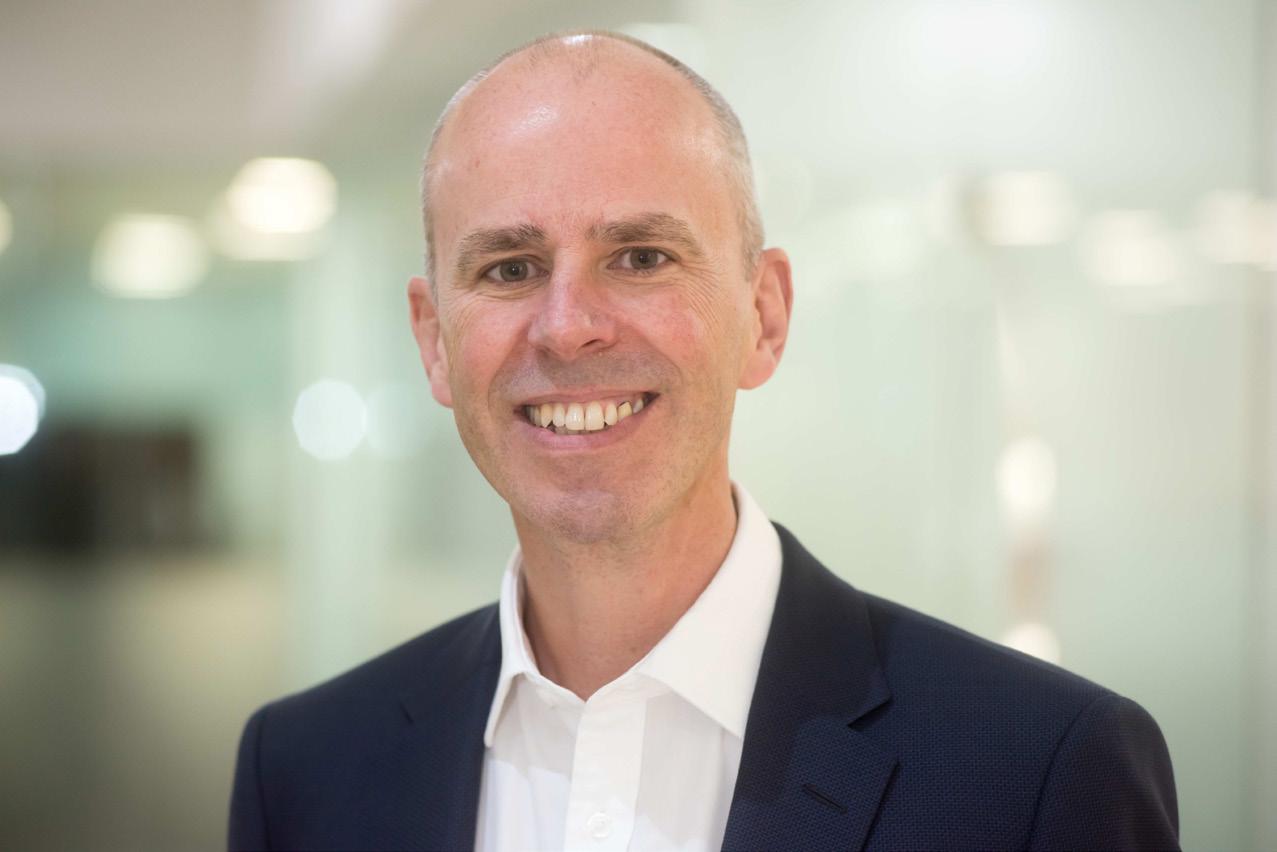
PATRICK SMITH
have signed up to some form of standards and reporting. Meanwhile, to tick green boxes without an honest approach to an organisation’s accountability, risks severe reputational damage. Remember Volkswagen’s Emissionsgate?
So, to not be accountable in sustainability terms is a risk. Investors don’t like risk; they want long-term stability, growth and profitability, and sustainability enhances this. It has often been a struggle to bring ESG concerns up the agenda, especially with boards that have been “traditional” in their make-up, but its importance can’t be denied. Customers and potential workforce recruits also prefer organisations that act ethically towards the environment.
This is why impact accounting that reports on the wider effect of an organisation’s activities, can make it more resilient to risk, enhance reputation and sales, and improve recruitment and retention.
Historically, the market has driven economic growth using metrics based on — and limited to — costs, income, and profit. Impact accounting broadens the balance sheet to include indirect costs that companies impose on society, but that do not show up in financial statements or product specifications.
Metrics can include total greenhouse gases produced directly and indirectly by company activity; emissions produced over the lifecycle of a product; company exposure to risks posed by climate change; consumption of natural resources; how a company handles waste, recycling and disposal; and investment in technology and renewable energy to reduce environmental impact.
Here’s a three stage example:
• A company that makes datacentre hardware can account for the materials and energy that go into the supply chain and manufacture of multiple components.
• An impact accounting model could quantify the
costs of greenhouse gas emissions, materials, water, waste, and land use throughout the value chain, and with monetary values assigned to them.
• This company could provide detailed analysis of its product lines, in which it provided data on energy consumption and carbon footprint during manufacture and lifetime use, potentially using frameworks such as that provided by the VBA. This process can provide an advantage in a market that is increasingly measuring the environmental effect of all business activities. Impact valuation and accounting are set to be the next phase in measurement of an organisation’s performance. As discussed, this can bring benefits in terms of attracting and retaining investors, as well as customers and workforce. Organisations can benefit by implementing ESG impact accounting and doing business with others that do so. Not just because it looks good, but because impacts measured by a partner organisation carry through to the products and services developed in that partnership, and can enhance positioning against the competition. Impact Accounting should become an essential way for organisations to measure and track their environmental progress. It should create a more level, open playing field which allows investors, customers, and the workforce to make educated decisions about companies they interact with and work for. This is for the benefit of each organisation as well as for the planet.


Alex Yang, Co-Founder, COO, and CFO of Tuya Smart, discusses AI, IoT and smart technologies.
TELL US ABOUT TUYA SMART.
We are building a developer platform on a global scale for developers who want to create intelligent applications or devices. We offer a turnkey solution that combines software and hardware.
On the software side, we provide a three-tier framework that includes device-level, cloudlevel, and application-level components. This framework is general and standardized, allowing developers to design applications across various cloud infrastructures, device architectures, and application structures with ease.
On the hardware side, we offer an intelligent module, including chipsets, connectivity, firmware, and more. We primarily serve two types of customers:
• Device Manufacturers: These customers design and produce intelligent devices. By integrating our modules and using our software system, they can focus on developing user interfaces and experiences while we handle the core intelligence. This enables them to create a range of smart devices, covering verticals like electronics, appliances, security, sensors, and more. We currently support over 7,000 brands globally in building their own smart device portfolios, with over 100 million new devices shipped to corporate markets every year using our platform.
• Space Managers and Developers: This category includes commercial and enterprise users, such as property developers and managers of various spaces—apartments, single-family homes, office buildings, parking lots, warehouses, and complex facilities. We offer a combined hardware and software turnkey solution for managing these spaces, making space builders and managers our target audience.
DO YOU HAVE A GLOBAL PRESENCE? ARE YOU BASED IN CHINA BUT OPERATE INTERNATIONALLY?
Yes, 85% of our business is outside of China. We follow the progression of high-tech adoption globally, starting with the most developed markets. The United States was our first market, followed by Western Europe, then Eastern Europe, and Asia (including China, Japan, and Korea), as well as Latin America, the Middle East, and finally Africa.

ALEX YANG
Co-Founder, COO, and CFO of Tuya Smart
We expand by following the flow of technology penetration across these regions.
WHAT ARE YOUR PLANS FOR THE MIDDLE EAST? DO YOU HAVE AN OFFICE HERE?
Yes, we have an office in Dubai, which we recently established. The Middle East, particularly the GCC countries, is one of our latest focus areas. We see incredible potential here, as these nations have a strong ambition to grow and upgrade their infrastructure. In Saudi Arabia, for example, there are numerous new construction projects aiming to build infrastructure with digitalization at the core. That’s where we come in.
HOW CAN WE MAKE AI AND IOT WORK TOGETHER?
We consider IoT to be a foundational infrastructure or an essential component. When you aim to digitize the world, it’s crucial to connect different elements through devices. That’s the first step. AI, in turn, acts as a catalyst. Once the network is established, AI can significantly enhance the user experience. Instead of relying on preset automation, AI enables the creation of thousands of unique interactions tailored to how individuals want to engage with their homes, rooms, offices, or cars. This is how we combine IoT and AI to transform the digital experience.

William O’Neill, Area Vice President - UAE at ServiceNow
ServiceNow announced the appointment of William O’Neill as Area Vice President for the UAE. In his role, O’Neill will lead the company’s regional teams across UAE, Kuwait, Oman, Qatar and other key markets in the region. His appointment comes as ServiceNow’s momentum in the region continues to accelerate.
“The UAE, and the wider Middle East, is a strategic market for ServiceNow’s growth. We are seeing tremendous interest in the Now Platform, from regional governments and private sector organizations, as they look to embed AI Agents across the enterprise in order to deliver improved employee and customer outcomes. Responding to customer demand, we’re excited to be going live with our UAE Cloud, now, ahead of our original timeline,” commented Fabio Spoletini, Group VP, Southern Europe, Middle East and Africa, ServiceNow.

Fugro’s Board of Management has appointed Annabelle Vos as Group Director for the Middle East & India. Annabelle will take over responsibility for the region as from 1 January 2025.
Annabelle has been part of the Fugro family since 2016, when she joined as General Counsel and Chief Compliance Officer. Prior to joining Fugro, Annabelle worked in private practice for 11 years at De Brauw Blackstone Westbroek, a tier-one law firm in the Netherlands, in their M&A and corporate litigation practice groups. Annabelle holds a Master of Law degree from Leiden University and a Master of Arts degree in International Relations and International Economics from Johns Hopkins University SAIS. She is a member of the Supervisory Board of SIF Group N.V.
Mark Heine, CEO of Fugro: “Annabelle has been instrumental in driving Fugro’s growth and success, all while being a strong promoter of company values and showcasing great personal leadership. Her extensive international background and keen eye for business success and excellence make her the ideal leader to grow our Middle East & India operations.”

Porciani CEO, JA Resorts & Hotels
JA Resorts & Hotels is pleased to announce the appointment of Ralph Porciani as its new Chief Executive Officer. With an illustrious hospitality career spanning over four decades, Ralph brings an extraordinary wealth of experience and a proven track record of leadership in luxury hotel brands. A third of his career was spent in central London’s finest hotels, followed by another pivotal 20 years at the renowned Trump Turnberry in Scotland, where he led the resort to achieve Forbes Five-Star accreditation, forming the next third of his journey.
Ralph’s passion for personalized service and customizing guest experiences was born from his Scottish-Italian roots, where he worked in his family's fish restaurant business before moving to central London. It was here that he learned the importance of building meaningful bonds with both team members and guests.
Now in Dubai, this final third of his career marks the pinnacle of his journey. In his new role, Ralph will spearhead the continued growth and expansion of JA Resorts & Hotels, a homegrown brand with a rich legacy. His focus will be on nurturing talent and fostering innovation, enhancing guest engagement through strategic initiatives such as digital transformation and sustainability, and reinforcing the brand’s strong repeat business.


